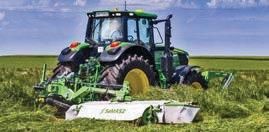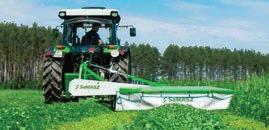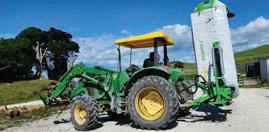Change through innovation
Award-winning farmer always looking to be better

PLUS:
BOP farmers punt on OAD shift
➜ DWN Regional Leader of the Year
➜ Focus on sustainability
➜ Better bulls better calves


Award-winning farmer always looking to be better

PLUS:
BOP farmers punt on OAD shift
➜ DWN Regional Leader of the Year
➜ Focus on sustainability
➜ Better bulls better calves

Our farms and our futures depend on us farming smarter. We have reached peak cow numbers and the nation is calling for better cows. Cows that can generate more milk, more efficiently. Cows that can produce more milk solids with less liveweight. Cows that can better utilise nutrients with lower nitrogen and methane outputs.



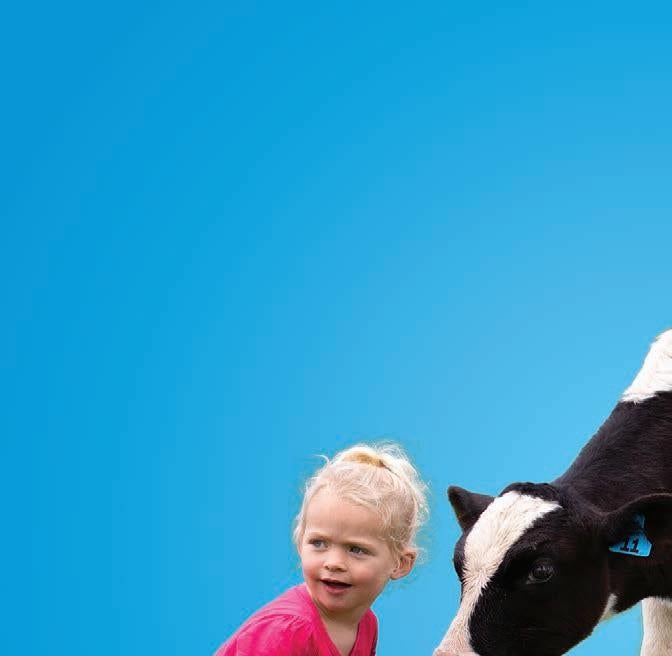
Our Premier Sires® teams have been expertly chosen to help you accelerate your rates of genetic gain and work with your farm system.
Every gain you make filters through the national database, building herd insights, and empowers other farmers to make better decisions for the next generation.













Talk to your Agri Manager today about farming for the next generation. Farm smarter with Premier Sires.
There's always room for improvement



These teams are hand selected by our genetic experts, blending top performing Daughter Proven bulls with a selection of elite young bulls. Talk to your LIC Agri Manager today about farming with Forward Pack.



021 044 1335 offthehoofmedia@gmail.com
TONY BENNY 021 383 156 troutstream@farmside.co.nz
ANNE BOSWELL 027 394 3904 anne@anneboswell.co.nz
Sales
ANDY WHITSON 027 626 2269 Sales & Marketing Manager. andy.whitson@agrihq.co.nz

STEVE McLAREN – Auckland 027 205 1456 steve.mclaren@agrihq.co.nz
JODY ANDERSON 027 474 6094 Waikato/BOP jody.anderson@agrihq.co.nz
PALAK ARORA 027 474 6095 Lower North Island palak.arora@agrihq.co.nz
OMID RAFYEE 027 474 6091 South Island omid.rafyee@agrihq.co.nz

ANDREA MANSFIELD 027 602 4925 National Livestock Manager livestock@agrihq.co.nz
DEBBIE BROWN – Directory classifieds@agrihq.co.nz 06 323 0765
REAL ESTATE 0800 85 25 80 realestate@agrihq.co.nz
Production LANA KIESELBACH 027 739 4295
Production Manager lana.kieselbach@agrihq.co.nz
Advertising material: adcopy@agrihq.co.nz
Subscriptions subs@agrihq.co.nz






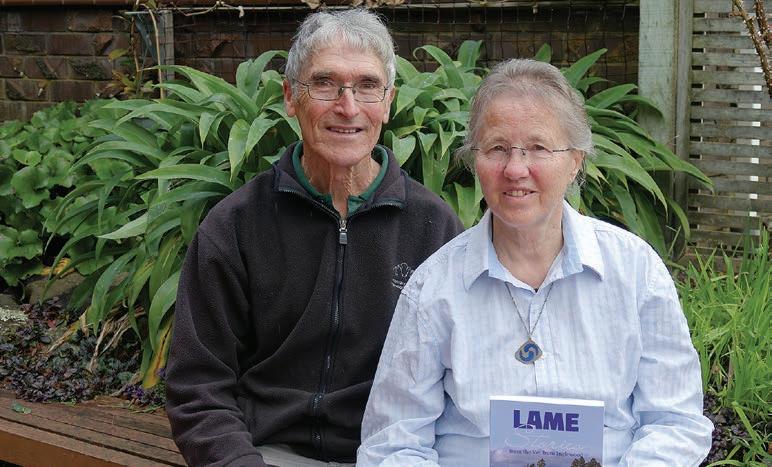

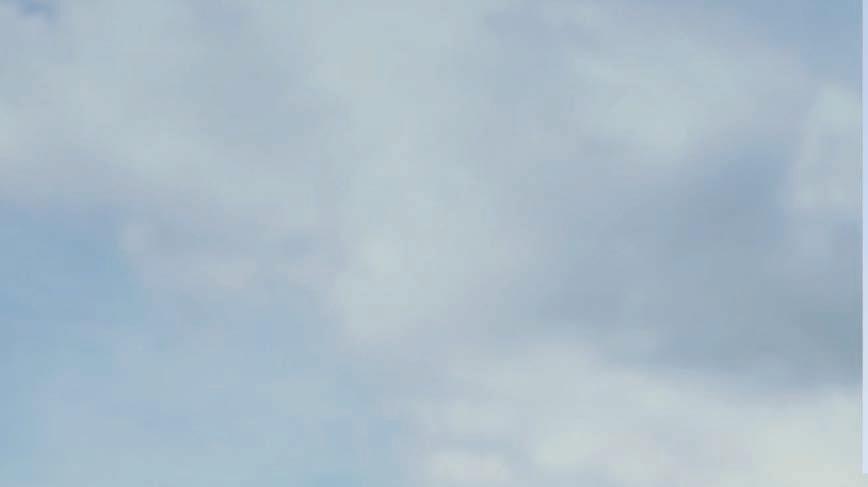





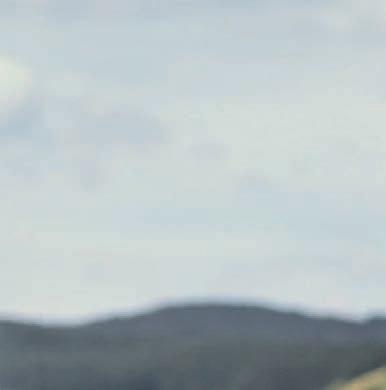



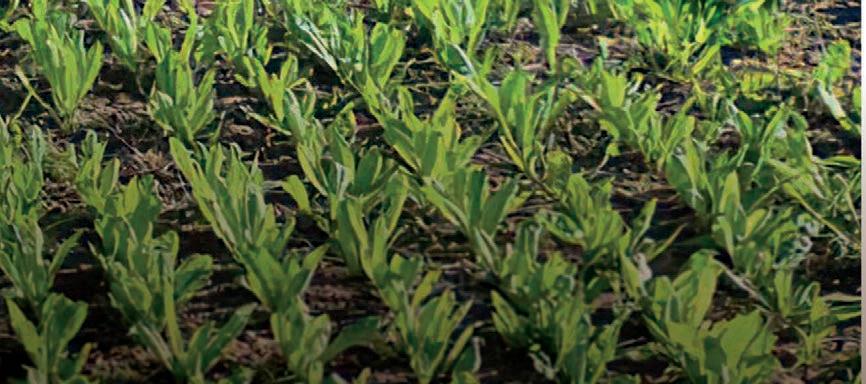
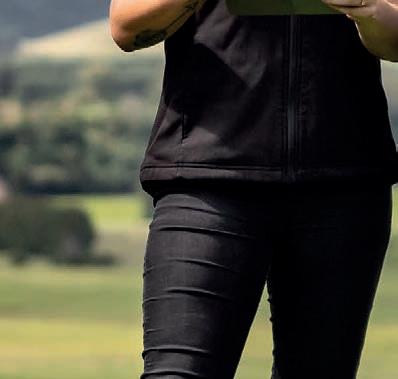










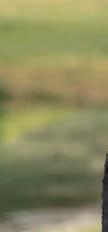
The effects of Cyclone Gabrielle are still hitting farmers, with veterinarians seeing a rapid rise in leptospirosis cases in both people and animals.
The recent wet weather caused by Cyclone Gabrielle has led to a concerning rise in leptospirosis cases among humans.
Although there is mixed information in the animal health surveillance data, it strongly suggests that the bacterium is circulating in animals. Humans are getting infected either directly or indirectly by contact with urine from infected animals, possibly through contact with floodwater.
“There is an increased risk of leptospirosis infections in animals and humans,” Massey University Professor of Veterinary Public Health Jackie Benschop says.

“We’ve seen an increase in human cases and there has been heightened talk among veterinarians of increased observation and treatment of lepto cases in dogs and sheep.
“The focus has been on increased cases in the floodaffected areas on the East Coast, but discussions indicate the problem may be more widespread.”
A joint statement has been issued by the Ministry for Primary Industries (MPI) Animal Health team, Massey University, the New Zealand Veterinary Association and


the Veterinary Council, raising awareness about the risk of leptospirosis in animals.
They will be sending a survey to veterinarians and facilitating discussion with vets about the number of cases of the disease, treatment and preventative vaccinations.
“This situation calls for attention and measures to protect both humans and animals from the spread of
this disease,” Benschop says. She recommends key preventatives such as talking to your vet about vaccinating livestock and dogs, keeping on top of rodent control and utilising personal protective equipment including covering cuts and grazes.
“It is important to seek medical attention early when feeling unwell and it can be useful to ask your doctor if you may have lepto.
“Symptoms can be similar to the flu or covid-19, including fever, severe headache, sore muscles, chills and vomiting. They usually come on suddenly and people with leptospirosis may have some or all of these symptoms.”
The MPI Animal Health
(endemics) team was tasked with monitoring endemic diseases that could increase post-flooding through their passive animal health surveillance system. Leptospirosis was one of those diseases.
“The increased wet weather which was exacerbated by Cyclone Gabrielle has increased the likelihood of leptospirosis, and the increase in rodents in the recovery phase would have contributed to the problem,” Benschop says.
If you have any questions or queries, contact the MPI Animal Health team via email, phone or through Endemic@mpi.govt.nz

“Symptoms can be similar to the flu or covid-19, including fever, severe headache, sore muscles, chills and vomiting. They usually come on suddenly.”
Professor Jackie BenschopMassey University Professor of Veterinary Public Health Jackie Benschop has warned people to keep an eye out for leptospirosis as cases are increasing.
From bale-grazing in winter to boosting oxygen in the irrigator, this North Canterbury ag leader has never met a farm system he couldn’t tweak.
 Cameron Henderson is always looking for ways that are more environmentally and economically sustainable to run the farming business.
Cameron Henderson is always looking for ways that are more environmentally and economically sustainable to run the farming business.
Cameron Henderson had plans for a corporate career rather than one as a dairy farmer but since he chose the land over an office he’s made his mark, both on farm and in the wider community, and was this year named winner of the Fonterra Responsible Dairying Award.
The award recognises dairy farmers who are respected by fellow farmers and their community and demonstrate leadership in their approach to sustainability.
Henderson, who farms near Oxford, North Canterbury, is an innovative farmer but also finds time to be a founder and trustee of the Waimakariri Landcare Trust, a member of the Environment Canterbury regional water committee, and fill various roles on the DairyNZ Dairy Environment Leaders group.
“I find the variety keep me motivated,” Henderson says. “If I was just doing one thing day in day out, it’d drive me nuts. It’s just a matter of balancing everything and most of the time it works.”
Henderson was born into a multi-generational farming
family and grew up on the family dairy farm west of Hamilton. There were aspects of dairy farming he liked, mainly the machinery, but he had other career plans.
“I guess I was more academic at school and if you were academic you didn’t even think about going dairy farming. My interest was always in problem-solving and designing things and fixing things and so I went down the engineering path.”
He studied robotic engineering and finance at Auckland University, did some travelling and then worked for Fonterra for three and a half years, starting in HR and then

working in the supply chain area, building track-and-trace systems and working on data management.
“It gave me a really good view across the entire company, what it was doing and how it worked,” Henderson says.
But he wasn’t sure the corporate world was where he wanted to be, even though Fonterra paid very well.
“I looked at the executives who were 10-15 years further ahead than me and they were working really hard, being paid exceptionally well and travelling all over the world and there were some parts of that that were quite attractive, but it just didn’t fit with what I saw in my future.”
He’d studied entrepreneurship at university and really wanted to be in his own business. After working for Fonterra he realised one of his best options was to go dairy farming.
“In many ways it’s an exceptionally easy business model to step into to because you’re not competing with the 12,000 other farmers in
Continued page 10
• Farm owners: Henderson Farms Trust (Cameron and Sarah Henderson)
• Contract milkers: Overend Meadows (Steve and Kate Overend)
• Location: Burnt Hill, North Canterbury
• Farm size: 238ha (221eff)

• Production: 2022-23: 341,000kg MS
• Production target: 2023-24: 370,000kg MS


JCB
JCB SERIES III IT’S JCB SERIES III TIME.

IF YOU CAN IMAGINE IT, A JCB SERIES III CAN LIFT IT.
IF YOU CAN IMAGINE IT, A JCB SERIES III CAN LIFT IT.
Some farmers think a telehandler is for the big farms or best suited to European or North American operations. But you’ll be surprised to know that telehandlers are the fastest growing on-farm utility category in the New Zealand market. You’ll also be surprised by what you can do with a LOADALL and how much it improves productivity on all types of farms. You won’t however be surprised to know that the JCB SERIES III is the world’s No.1 LOADALL.
Some farmers think a telehandler is for the big farms or best suited to European or North American operations. But you’ll be surprised to know that telehandlers are the fastest growing on-farm utility category in the New Zealand market. You’ll also be surprised by what you can do with a LOADALL and how much it improves productivity on all types of farms. You won’t however be surprised to know that the JCB SERIES III is the world’s No.1 LOADALL.
You’ll wonder how you farmed without it!
You’ll wonder how you farmed without it!
JCBAGRICULTURE.CO.NZ
JCBAGRICULTURE.CO.NZ
When Cameron Henderson left corporate life to take up dairy farming like generations of his family before him, he brought with him a new way of looking at things.Tony Benny
“I guess I was more academic at school and if you were academic you didn’t even think about going dairy farming.”
Cameron Henderson
the country – everyone shares their information, you can learn a lot from of what other people are doing and put it
together to create a successful business
“And, arguably, you’re only running half a business
because you don’t do sales and marketing and manufacturing, someone else takes care of that.”
Having made the decision to go dairy farming, Henderson looked around and decided the best opportunities were in Canterbury.
“Down here they were about five years into the dairy boom so I thought, ‘I’ve got some family experience to back me up, plenty of advisers, so let’s give it a go.’”
He moved south in 2009, taking a dairy assistant’s job with Steve and Sharon Schmack in Mid Canterbury. When they moved to Mayfield to convert their parents’ drystock farm, he went with them as 2IC.






“That was a really good learning curve, coming in early in the conversion process and seeing how it worked.”
In 2011, with the support of his family, he bought a 190ha block at Burnt Hill, near Oxford, land that had previously been used for
QR codes on the dairy backing gate are read by camera system that links into an automatic system that advances the gate.sheep farming and cropping.
“Since I started, I knew I wanted to own my own block of land and do my own thing so from the day I arrived in Canterbury I was looking for blocks of land and putting the numbers together and doing a bit of modelling on water requirements and what a business model might look like, and this came up.
“It was very fringe dairy territory at the time, it didn’t have infrastructure on it, and it had been leased out for nine years. It’s windy here and the soils are light so there are a number of things that probably aren’t perfect about it but that made it quite a good deal when I came to buy
it. It scared a lot of people off,” Henderson says.
There were three wells on the farm, albeit undeveloped, and not much else – no power, no water, no housing and no sheds.

“If I knew how much work I was taking on, I would never have done it, but ignorance was probably quite useful back then. We converted the farm on a shoestring budget and borrowed half the money
from the bank and half from the family.” There was only enough money for one house, which was shifted out from Christchurch following the earthquakes.
“I had one staff member living here and I was renting a house down the road and living with another staff member for three years. I was still single, and I was hiring single people on purpose
because we were very short of space, but it worked quite well.”
Since then, the farm has grown to 238ha plus a nearby 200ha support block, leased from renowned golfer Sir Bob Charles. Contract milkers Steve and Kate Overend now milk the 750 Kiwi-cross cows on Henderson’s farm.

“The dairy farm’s fairly settled now and we’re getting to the point now where we’re tinkering more than anything else.”
What Henderson calls tinkering might be considered big changes by other farmers but he’s always looking for better ways, ones that are both economically and environmentally sustainable, to run the farming business.
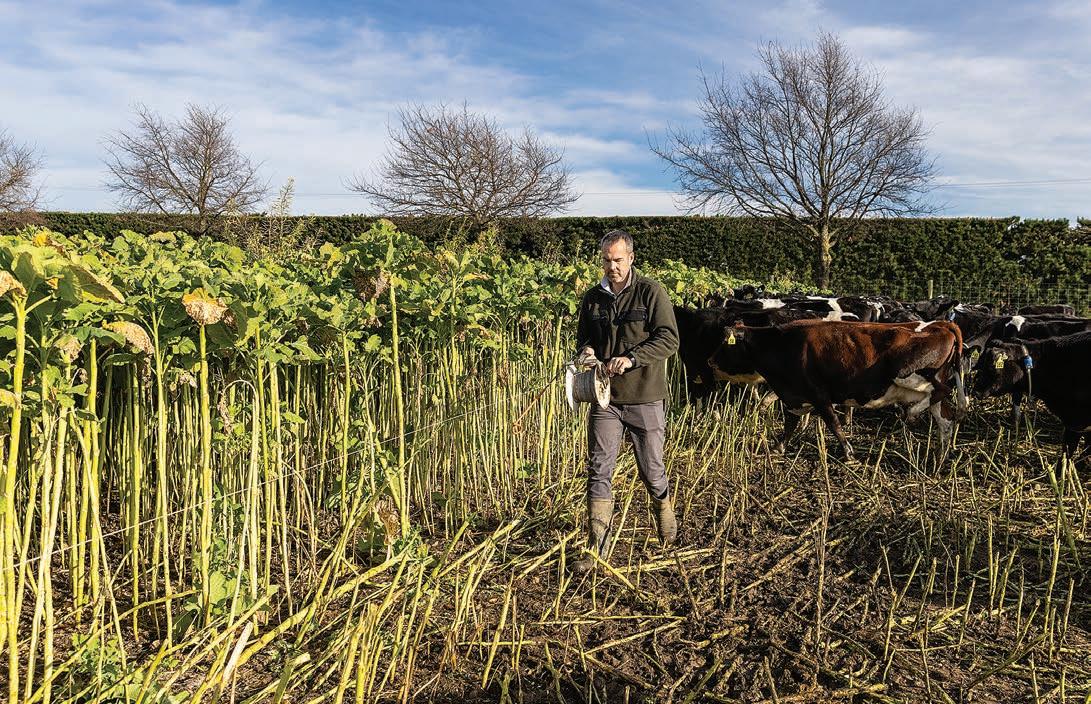

He’s rethinking how he uses the 200ha support block, which for the past few years has wintered his cows plus a neighbour’s herd, a total of 1700 cows.
“We know how to grow winter feed and feed cows and that’s provided some winter cashflow to provide us a very flat income curve through the year and we don’t get the big peaks and troughs.
Continued page 12
“In many ways it’s an exceptionally easy business model to step into to because you’re not competing with the 12,000 other farmers in the country.”
Cameron Henderson
“The October-November retro payments from the dairy farm tend to go into growing the crops down the road and the wintering money comes through in winter, which subsidises our dairy farm when the milk cheque isn’t coming in.”


They also grew small seed crops and barley on the block, so the operation had become quite complicated and relied on experienced manager Pete McPherson to keep it ticking over. When McPherson left farming to become a fire-fighter, Henderson decided the system had to
be simplified. That coincided with his growing doubts about relying on fodder beet to winter his cows, doubts that were amplified when data from recently fitted Allflex collars came through in real time.
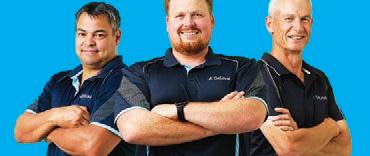
“We were feeding fodder beet with a little bit of grass silage and finding, like a lot of people are, that that’s not really doing us much service. We’re getting fat cows out of it but we’re getting a high empty rate and a lot of mysterious deaths.”
The collars revealed repeated drops in rumination,


which Henderson attributes to acidosis brought on by giving cows exactly the same ration of high-sugar fodder beet each day.
“It could be anything from having a wet day so the cows make a real mess of the fodder beet and don’t really eat much and then over the next few days it all dries out, so they eat their next allocation plus back-graze and then you get a sudden spike in acidosis and the rumination drops away,” he surmises.
He adds that even with yield testing, some paddocks have lighter or heavier cropping
patches that mean some cows get more fodder beet than is good for them.
“Most of the acidosis is subclinical and not obvious to the eye so in the past, before collars, it could have been happening all the time and we just wouldn’t have noticed it.”
Acidosis can burn the cow’s rumen and while it can be treated if caught early enough, it can slowly kill them.

“She can’t absorb energy from the feed, so they’ll just go downhill, get skinny and die. That quite often manifests itself after winter so you’ll think you’ve got through winter, the cow will calve so she’s under stress and in energy deficit anyway, then you’ve got acidosis on top of that.

“We were finding was we had fat cows that would calve and we might lose 5% of them and we just couldn’t figure out what was going on.”
Like other Canterbury farmers, Henderson had

“It was very fringe dairy territory at the time, it didn’t have infrastructure on it, and it had been leased out for nine years. Cameron Henderson
believed fodder beet was the best wintering option available. Although relatively expensive to grow compared to kale, it offered twice the return per hectare.
But it’s tricky to feed and if you get it wrong, like taking the cows off the diet for more than about 24 hours at a time, the results can be disastrous because of acidosis.

“We had a big storm two years ago so we shifted them off into protection because the storm had lasted so long, and they had three days of silage and hay. We transitioned them back on to the fodder beet but got it wrong and immediately lost a number of them.”
As well as the concerns it raises for stock health, the damage to soils and to the wider environment from wintering cattle on crops just isn’t sustainable long term, Henderson believes.
“There were days during a weather event recently when I walked over Lytham [the support block] and said, ‘This just isn’t good enough. We’re doing farming to best practice
but they are still living in mud.’
“The soil structure’s just completely gone and I think there’s only so long you can get away with that before you see the farm go downhill. You’ve got cows pugging right through the topsoil to the stones so the topsoil’s getting absolutely buggered. It’s just not good for the farm.”
The solution for Henderson is to ditch wintering his
cows on crop altogether and he’s leased 60ha of dryland adjoining the dairy farm where he plans to bale-graze through winter, a practice quite rare in Canterbury but popular in Southland.

“We’re still working through the best way to do it. The current plan is we’ll have some round hay bales and some individually wrapped silage bales laid out pre-winter and one day a week going out and opening the bales a week ahead and then just shifting the fence every day.”
The herd will move much faster than on fodder beet, with the 750-cow herd expected to use about .8ha a day. Henderson’s looking forward to life with less of the mud that goes in hand with feeding crop.
“If you get 100mm of rain you’ll make quite a mess in that break and you might lose two out of 16 paddocks that you need to regrass, but because it’s on non-cultivated ground on pasture with a permanent root system, that helps drain the water away and we hopefully won’t have anywhere near as much mud or soil erosion.”
Continued page 14
“We were finding was we had fat cows that would calve and we might lose 5% of them and we just couldn’t figure out what was going on.”
Cameron Henderson
According to regulations, Henderson says, bale-grazing isn’t wintering so he won’t need a consent. “It should be better environmentally because you’ve got the living root in the soil that should continue to use the nitrogen through the winter.”
He’s expecting big gains in animal health but accepts it won’t be as economic as feeding fodder beet or kale.
“You have to take a more holistic view of the numbers. If we can improve our in-calf rates and our cow wastage and grow better crops so we’re not destroying our soils – and it’s hard to put a number on that – my hope is it balances out the straight economic loss of spending a bit more to make it happen.”
Henderson recognises that by putting an end to wintering on crop, he’s moving away from what is currently deemed good practice, but trying something different
is in his nature. He’s also decided to ditch another recommended practice, using sexed semen, because he reckons he’s just not getting acceptable results.
this to be the fastest way to improve his herd’s genetics. Because sexed semen needs to be used fresh, CIDRs were used so the heifers could all be inseminated on the same day – but despite that achieved only a 35% conception rate, not the 75% he’d hoped for.
This year he’s going back to standard, high genetic worth semen. “We’ll need to breed more of our cows and we’ll end up with a lot more bulls so we have to accept a lower overall genetic gain.
“We’re trying to follow the best practices with sexed semen and use it on the heifers because they’re they absolute best genetics we’ve got, but we’ve been hurt too much by the results.”
Another change Henderson has made is fertigation, adding liquid urea to the irrigation water, to be delivered by the three centre pivots on the farm instead of applying it in solid form. He believes clover will start to thrive again under the lower rate and will contribute to overall N levels.
After being decimated by clover root weevil for years, the natural nitrogen fixer is now bouncing back but Henderson reckons that process is being slowed because clover doesn’t do well when too much urea is applied.
“We got addicted to putting on 250-300 units of N and got scared of what would happen if we pulled it out and kind of forgot to learn how to farm with clover in the system,” he says.
“My theory is by putting on a little and often, three to four units a week, rather than dumping on 40 units once a month, the nitrogen is at a steady level that should benefit the ryegrass and clover.”
and still maintaining our production so that’s a good enough result for me.”
There are also some potentially large changes in store to the way he irrigates, thanks to a Sustainable Food and Fibre Futures trial project to be undertaken on the farm, replacing the sprinklers on a centre pivot with dripper lines that will drag across the ground surface and to deliver the water more directly to pasture.
Talking about the technology as a nor’wester blows hard, Henderson is enthusiastic about the potential of dripper lines over sprinklers.
“On a day like this, 10% of the water may hit the ground if you’re lucky and with an El Niño year ahead, you might have a week of blowing like this and you go backwards in soil moisture really quickly, so we should see some advantages in water use.”
And it won’t be ordinary water either. The company behind the project, Nanobubble Agritech, will use technology developed for hydroponics to boost the amount of oxygen in the water.
“The technology was developed for hydroponics to inject pure oxygen bubbles into the water which then feeds the roots, and they get exponentially greater growth because the roots are healthier. These guys have developed the same technology for a pivot to irrigate your water into the ground that will hopefully give similar benefits for pasture.”
“We’ve used sexed semen for the last two years but the conception rate was fairly poor,” he says.
He’d been using sexed semen for his heifers, believing
Since installing fertigation, he’s dropped nitrogen from 220 units to 130 units and is now well within the allowable limits.
“We’ve been applying only 60% of what we were applying
Henderson’s farm is one of two in Canterbury where the technology’s being trialled and he’s crossing his fingers it may deliver the 20-30% extra grass growth shown in earlier trials.

“It’s a commercial technology they’re looking at developing and we’re just one of the commercial trial farms to give it go.”
While he tries to be hands-
“We’ve been applying only 60% of what we were applying and still maintaining our production so that’s a good enough result for me.”
Cameron Henderson
off on the farm’s day-to-day operations, Henderson finds there’s plenty to keep him busy there, especially when
he combines that with his off-farm roles, which more recently have included director for Ballance Agri-

Nutrients and trustee on local lines company MainPower Trust.
“I’ve set up a portico office


STRESS FREE MATING
Bulls weighing your feed supply down? Across New Zealand, dairy farmers are switching to 100% AB, removing bulls from farm. With the benefits of CowManager, a slightly longer AB season becomes a breeze, and you can confidently say goodbye to retaining bulls on farm.

on the farm with a computer so I can do all my Zoom meetings here,” Henderson says.
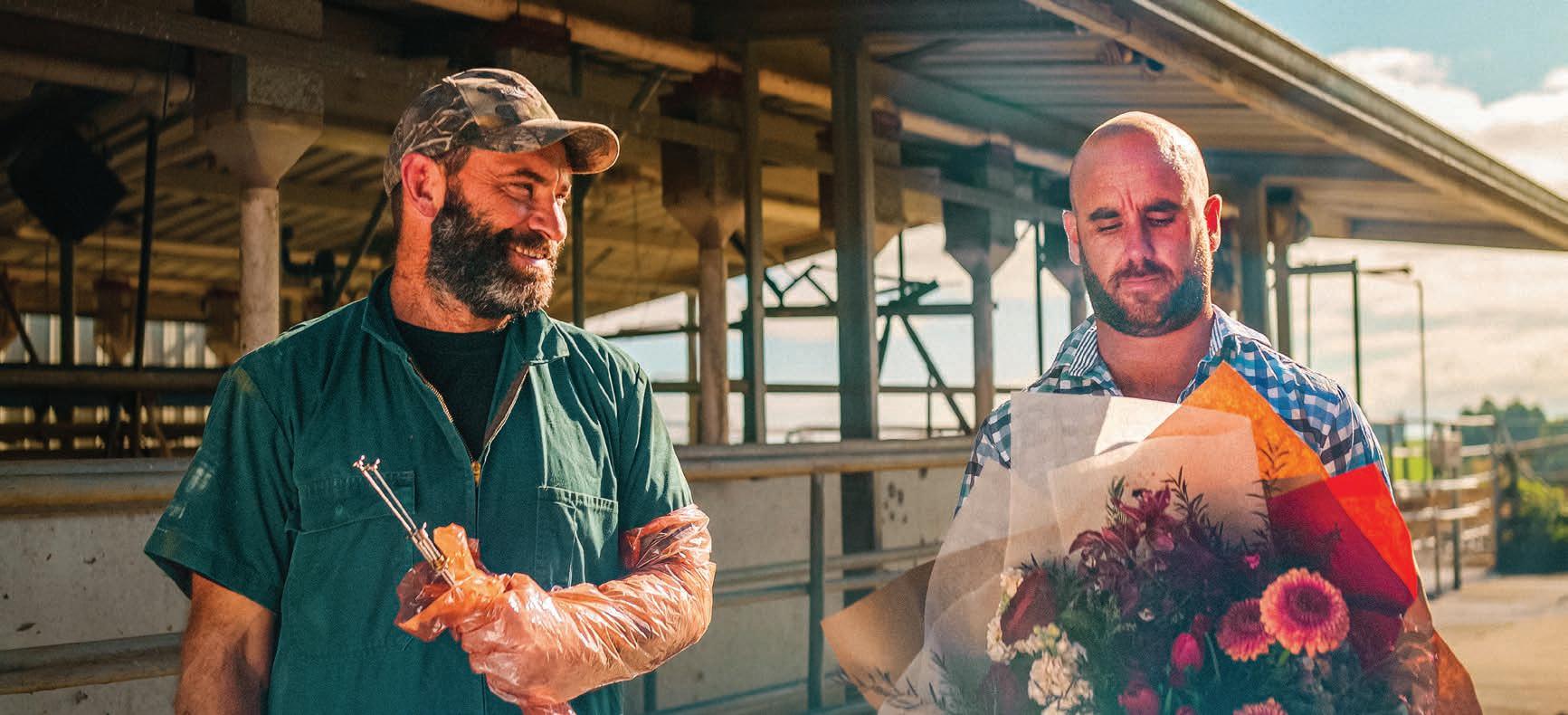
Each month the Milk Monitor delves into the dairy industry and gives us the lowdown on the good, the bad, the ugly and everything in between.
It’s the cut many suspected was coming and no one wanted as Fonterra finally lowered its milk price forecast, bringing a new midpoint of $7/kg milk solids.

Just days later, Synlait followed suit, matching Fonterra.
Much has already been said about its impact inside the farm gate and the wider regional and national economy.


With input costs still tracking high and no relief yet in sight from interest rates, it’s going to be a challenging season.

Twenty-four hours before Fonterra’s forecast cut was made public, consultancy company AgFirst presented its annual financial survey.
Agricultural economist Phil Journeaux announced the findings, joking that they “came with a health and safety warning” because they were so depressing.
The dairy farm model created from the survey results would make a small
profit because of Fonterra’s dividend payment and one-off capital return brought about by the sale of its offshore businesses.
In effect, the investment businesses are keeping the farm in the black.
But this doesn’t include farmers supplying other dairy companies – and that budget was done on an $8 payout.
Interviewed by Farmers Weekly a few days later, Journeaux said the $1/kg MS reduction will reduce farm incomes by about $1bn, and the economic impact on New Zealand’s economy will be about $5bn.
Farmers said they had been expecting a drop in the farmgate price for the coming season, but the magnitude has surprised them.
Journeaux said he, too, was surprised by the size of the reduction, which will have a significant impact on farmers.
“Things are going to get bloody serious very quickly,” he said.
Then came the GDT on

August 16 where the price index dropped 7.4% and whole milk powder 10.9%.
NZX dairy analyst Alex Winning said it was the lowest index price for five years, slumping to a level last seen in November 2018.
RaboResearch senior agricultural analyst Emma Higgins had made a similar point after Fonterra cut its forecast, saying dairy commodity prices are now below five-year averages – a significant and “painful” adjustment.
She noted that Fonterra’s $7/kg MS midpoint had weakened by 24% compared to 12 months ago.
“In the dairy downturn period (including seasons 2014/15-2015/16), the milk price plummeted from $8.40/kg MS (2013/14) to $4.40/kg MS (2014/15).
“If we adjust for inflation, that’s like the milk price in today’s terms sinking from almost $10.60/kg MS to $5.50/ kg MS.”
ASB economists who had
long forewarned of a $7-$7.25/ kg MS forecast were trying their best not to say “I told you so” when they published their Dairy Update on August 4.
“Our view was largely underpinned by our expectations that China would experience a patchy economic recovery and enjoy high levels of milk production, which in turn would depress demand for dairy imports from NZ,” Nathaniel Keal wrote.
That lower import demand from China has widely been cited as the culprit for the forecast fall.
If the price ends up around $7/kg MS, that will be $1.29 below what Journeaux was predicting as the break-even payout required for farmers.
“We won’t relish being correct,” Keal said.
“A milk price around the $7/kg MS mark will be below break-even for many farmers at a time when the climate indicators imply there could be a challenging latter half to the season as El Niño sets in.” n
Apair of New Zealand vet researchers have come up with a world-first method that offers an alternative to the painful and somewhat outdated “disbudding” procedure in young calves.
Disbudding involves the use of a hot iron to cauterise the tissue where horns would normally develop. Research suggests it’s not unusual for calves to feel pain due to the open wound, or its healing process.
Welfare Concepts, founded by Richard Emslie and Richard Olde Riekerink, both NZregistered veterinarians, has patented a pharmaceutical that is injected underneath the area in which horn buds develop and has a localised effect, preventing hornbud development.

year undergo the routine removal of the tissue that would see them develop horns,” Olde Riekerink says.
“Disbudding is important to protect herdmates and people from possible injury from horns. While many beef cattle have been bred to eliminate horns, the genes responsible for horn development are closely associated with milk production, meaning most dairy calves worldwide undergo a painful procedure.
“Welfare Concepts believes that if we have the knowledge and know-how to make animals far more comfortable, it should be our responsibility to do so. There are a lot of processes and procedures like this one that can and should be improved using modern veterinarian science.”
Says Emslie: “NZ leads the world in dairy exports. We believe that it’s also time to lead the world in calf and cow care. We’re proud to be partnering with AgriHealth to achieve this through innovative dairy cattle veterinary medicines,”
Ed Catherwood, managing director of AgriHealth, the sole investor in the seed round, says consumers around the world care about how animals are treated.
The product has been successfully tested on calves and appears to be both safe and effective, the company says. Researchers are optimising the product and preparing for clinical trials, after which the product will be scaled up for commercial manufacture.

“Up to a million young calves destined to join the country’s dairy herds each
“What Welfare Concepts has developed has the potential to reshape an industry ripe for disruption and we’re excited to be partnering with them,” he says.
To date, the animal health company has raised $3 million to develop a handful of pharmaceutical innovations that it believes will bring about a step-change in the health and welfare of NZ’s dairy herds.
“If we have the knowledge and know-how to make animals far more comfortable, it should be our responsibility to do so.”
Richard Olde Riekerink
A Taranaki vet has travelled around the world learning about and treating lameness in cows.

It can be easy to dream up all manner of reasons to traipse around the globe on adventurous travels to far-flung and exotic locales, but Taranaki veterinarian
Neil Chesterton and his wife Sandra had, quite literally, a lame excuse for doing so.
Neil is an expert on dairy cow lameness, and his research has allowed them to travel the world.
Now their travels feature in book penned by Sandra, Lame Stories from the Vet from Inglewood, which chronicles Neil’s lame cow journey.
“We always travel overseas together. In 2015 we travelled through Uruguay with an Argentinian vet, teaching vets and farmers about lameness.
Neil always uses stories to teach, and the vet said that we should write a book because it would be a good way to teach farmers,” Sandra says.
“We didn’t do anything about it, so he mentioned it again. Neil told me that I’d have to write it because he didn’t have time. So I decided to put pen to paper.”
The original concept was simply to teach vets and farmers about lameness, but people kept asking her about their interesting travel stories from the many different places they’d travelled to, and the book evolved into the story of how Neil became a lameness expert.

“I teach by telling stories. I don’t like graphs and numbers; stories are more engaging. On your travels you see cows while you’re doing your work, but you also see the country. The farmers often
take you out to look around the farms and countryside,” Neil says.
“Sandra hung up a piece of string with over 30 flags on it. She told me that each flag was from a country we’d visited to talk about lameness.”
The book took five years to write. Neil retold the stories, and their granddaughter, Eden, helped Sandra build a large storyboard to get the stories in order.
“A year ago I asked a friend who doesn’t know anything about dairy farming to read the book, to check that it was readable,” Sandra says.
“When she’d finished it she said, ‘I don’t know what an electric fence is.’
So I expanded portions of the book to explain things for the general public who had limited dairy farming knowledge. It was a balancing act to make it an enjoyable read for those within the dairy industry and the general public.”
They have been amazed with the overwhelmingly positive response to the book.
“The Inglewood Public Library didn’t charge us for the book launch and the local Inglewood Book Centre is selling our book on our behalf because we’re from Inglewood.
“The local support has been fantastic,” Neil says.
One of the most fascinating
places they travelled to was Afghanistan. They arrived in the country just after the Russians left. They lived on the Pakistani border and were part of a United Nations Development Project (UNDP) whose aim was to replenish the livestock that the Russians had deliberately wiped out.
“An NGO wanted to send livestock into the country, but the UNDP felt that it was better to breed up the existing livestock that had been bred for their very specific conditions,” Sandra says.
The UNDP’s aim was to find NGOs to undertake the project, and Neil’s first job was to write the proposal in English.
An Afghan vet ran the programme and young farmers from each province came to Peshawar in Pakistan to be trained to keep their animals alive and multiply them.
“Eight years later we returned to Afghanistan. We wanted to live in the province where my guys were working
to see how they were doing,” Neil says.

“Five of the six people that had been sent to our province were still working and were really valued by the farmers. They performed simple veterinary work such as vaccinations and drenching, but they were doing a remarkable job keeping the animals alive.”
The farmers in the area where they worked usually owned a cow, heifer and calf. Each day those cattle would be taken into the hills along hard, rocky tracks to search for fresh grass.
“Even though those tracks were rough, I only saw one lame cow in the time that we were there. The cows traversed uneven, hard, rocky terrain, but had time to pick their path. This demonstrates that one way to decrease the risk of cow lameness is to allow cows to find their own way along farm races,” Neil says.
Born in South Africa, Neil and his family moved to Australia. After completing his schooling, he trained at Sydney University to become a vet. He came to New Zealand for his first vet job, wanting to work with dairy cattle.
He hadn’t been taught that lameness was such an important factor for the dairy cow. Farmers continually asked him why it was occurring, and because he didn’t know, he began researching lameness.
“The thing I learnt was that lameness in New Zealand was different to what I was reading about. The vet books were mainly from the northern hemisphere and their cows were housed indoors,” he says.
“People said that lameness in New Zealand was also due to our cows standing on concrete for too long, whereas I knew that wasn’t the case.”
He undertook more studies and employed a vet to perform his on-farm work while he researched the subject.
“In Germany they blamed a range of factors for their indoor-housed cow’s lameness. Yet I have videos showing their heavy 500kg cows slipping as the backing gate shunted them along.
Those cows were getting White Line Disease right in front of their eyes, yet they said it was due to other factors,” he says.
Neil uses the phrase “Meet the real cow” to explain the dairy cow. Some people think that cows are stupid animals. They blame the cow for poor cow flow, and when the cows don’t seem to do what is required of them..
Cows aren’t dumb animals; they have an order and know who’s who. It’s fascinating watching them and learning their habits. You see them with different eyes, he says.
“Our studies have shown that cows want to move in a fixed order. They’re often pushed too hard when they walk to the cowshed.
“If you take the pressure off them, they sort out their own order. The order in which they walk on the race changes when they move through the yard.
“The greatest risk for lameness comes from putting pressure on the cows.”
He discovered that hoof damage usually occurs during the time the cows are travelling to the cowshed and through the holding yard.
“I once said that you should keep 5m behind the cows, but I was wrong. Four years ago, I conducted some experiments and discovered that being closer than 10m pushes the cows too hard.
“If you’re too close and push too hard, the last cows watch you and not where they place their feet. Try following two fenceposts behind the cows, it’s a handy distance measure.”
While visiting a South Island farm milking 850 cows, he noticed a staff member bringing them to the shed was only 5m behind the herd. This caused the back group of 80-150 cows to bunch up.

“I asked him to drop back to 10m. He replied that he’d already tried that, and it caused the herd to stop. He went back 10m, and the back group did stop, because they’d been too tight.
Sandra and Neil Chesterton spent time in Afghanistan, arriving just after the Russians had left. They lived on the Pakistani border and were part of a United Nations Development Project whose aim was to replenish the livestock that the Russians had deliberately wiped out.

“The others kept going at the same pace and finally the entire herd was moving.”
It was all about finding their own pace. n
A keen sharemilking couple are taking a punt on changing to once-aday milking for the full season for the sake of their team’s quality of life.
Standing on a hill out the back of the Paengaroa farm all you can see is a sea of white in every direction, but nestled among the kiwifruit orchards is a stunning jersey herd owned by Aaron Mills and Sophia Clark.
After three seasons they are getting used to the view and enjoying the novelty of being a bit different.
Bernard and Pauline Hermann have owned the farm for 21 years and refuse to let it be absorbed by the orchards that have encroached on them.
“Apparently there used to be several dairy farms in the area, but we’re pretty much on our own nowadays,” Mills says.
Following the theme of
being different, next season they have decided to start straight off the bat on oncea-day (OAD) milking. Mills and Clark know it could be a gamble but they can see the benefits for their business and the team. And they are confident they have the opportunity to achieve similar production.
“We are milking 535 cows through a 37-a-side herringbone and due to the layout of the farm there are some long walks, so milking can take a bit of time,” Mills says.
“We usually go once a day from around Christmas so we’re keen to give it a go from the start, take some of that pressure off and hopefully maintain production.”
They have also found it
challenging to build a good team so think OAD will add to the appeal and hopefully help them hang onto the great people they have finally got.
“We’re competing with jobs like driving forklifts in the pack houses, which is a lot easier than milking cows, and the shifts can be more appealing.
“So we’re trying to find ways to make dairying more attractive.”
They have a herd manager, Deon Steyn, who has around six years of experience dairying, and an assistant, Hayley Gibbs, who is relatively fresh but they are both reliable and securing good people has been a relief for the couple.

On OAD they will still stick with 5.30am cups-on but the
• Farm owners: Bernard and Pauline
Hermann
Sharemilkers: Mills Farms Ltd, Sophia Clark and Aaron Mills
• Location: Paengaroa, Bay of Plenty
• Farm size: 150ha (250ha including the support land)
Herd size: 535 cows
• Production: 2021-22: tbc -
171,000kgMS
• Production target: 202223: 175-180,000kgMS
• Production target: 202324: 170-180,000kgMS
goal is to have everyone home at a reasonable time. Through calving they operate a roster of six on, two off and for the rest of the season the roster is 11 days on, three days off, which was developed through consultation with the team. They also share around sleepins since the shed only needs two to milk.
“We have floated other roster ideas but the team really like having three-day weekends and if they want a longer break every now and then it only takes two annual leave days to extend the weekend and have five days off.”






The farm is 250ha all up with 150ha being the milking platform and the rest being the support land the youngstock graze on. The decision to try full-season OAD was also driven by their system and the climate. They are a System 2, sometimes


a System 3 and typically summers can be very dry.
“We won’t change much of our management initially, but we want to be less reliant on bought-in feed eventually,” Mills says.
They do not grow any crops on the farm as their soil structure makes it tricky to re-establish pastures. They have light, free-draining pumice soils and tend to have weed issues. They usually get
around 150- to 200t dry matter worth of silage off the farm and they buy a little from a neighbour as well as about 100t of maize.
Continued page 22
Breed




“With our climate, the year we need a summer crop it probably wouldn’t grow well anyway, so we make do without them.

“We do use palm kernel













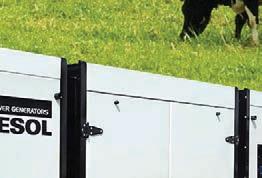



if we need to but it’s very season-dependent and changing to once-a-day should reduce our need to bring in feed to plug gaps.” When it comes to pasture



















management, Mills has a big focus on round length. Through winter, the round is between 80 and 90 days and they utilise the spring rotation planner to keep on top of








grazing management while the herd is calving. Once they hit the balance date, which is typically September 5, they are on a 21-day round.

Until they hit a genuine surplus, the rotation stays relatively consistent at 21 days through peak growing. When they shut some paddocks for silage, they stretch it out to

“We usually go once a day from around Christmas so we’re keen to give it a go from the start, take some of that pressure off and hopefully maintain production.”
Aaron MillsSophia Clark grew up around Whakatane and studied at Lincoln University, gaining a Bachelor of Commerce in Agriculture majoring in plant production science and agricultural management.
25 days. Come January, they flick to a 30-day round until it rains. Mills expects to keep everything the same on OAD too.

The farm has a rolling contour, which creates a lot of variation with plate metering so they stick to the dates and round lengths each season and find it reasonably reliable.
“There’s just too much variation with all the ups and downs across the paddocks, plus it takes a very long time to get around it all, so for us, it works better to stick to the dates and the learnings from each season,” Mills says.
They work closely with Ravensdown and soil test the farm every second year, applying the recommended fertiliser as needed. Their nitrogen use has been limited, largely due to time pressures. They have been using 90 units per season but will hopefully be able to utilise a bit more under OAD.

“We tend to miss the opportunity with nitrogen as we’re too busy when we are milking twice a day, especially because we’ve got the youngstock work to do as well.”
They milked 535 cows in the peak this season and have been producing 350kg of milksolids per cow. Next season they are increasing to 545 cows and are keen to achieve the same production on OAD with better reproductive performance,




having more time available and a better lifestyle opportunity.
They have an outstanding six-week in-calf rate of 84%, which will go a long way to helping keep production up on OAD.
“We are trying to make sure we get as much milk in the vat as possible to try to achieve the same production as we do on twice a day.”
Their reproductive performance is usually very good but this season they stepped it up a gear, chasing that early production.
“We were worried because spring had been tough and we were wary of ending up with a drawn-out calving,” Mills says.
“We usually have a rule
not to use any intervention but last mating we chose to synchronise a good chunk of the herd, to ensure we were condensing calving as much as possible so we could capture that early milk.”
They always metricheck the herd leading into mating and treat any cows with signs of infection. They have a good relationship with their vets and emphasise the health of the herd.
When they moved to the farm three seasons ago, they bought the established herd from the Hermanns. They were the first sharemilkers on the farm and although they had a herd already, this herd was too good of an opportunity to pass up. So they sold their old herd to buy
this one that was very well established with high genetic Jersey cows.
“We are both really passionate about Jerseys,” Mills says.
“We had been including a lot of Jersey genetics in our breeding with the last herd

Continued page 24

Sophia Clark and Aaron Mills’ ultimate goal is farm ownership but for now they are striving to achieve similar production on OAD while balancing the lifestyle for their team better.
“Here we are pretty standalone, which certainly has some great benefits when it comes to biosecurity.”
Sophia Clark
but we worked out it would have taken us 40 years to reach the level of the new herd.
“The cows are pretty elite, they are in the top 1% for breeding worth in the country, so it was a pretty big opportunity for us.”
They are striving to speed up the genetic gain and have been synchronising their heifers and artificially inseminating them. They also use LIC Premier Sires Forward Pack and some of the Jersey Future bulls across the herd. They have sampled 50 straws of international sires from Semex.
“It can be a bit of a punt using unproven bulls but we are seeing great results and the way I look at it, we are getting those really good genetics a few years earlier than we would if we waited, so it’s worth it.”
They have several contract matings for LIC and CRV each season, with 15 confirmed currently with a potential for more through the Jersey Genome programme. They are very proud of their herd and Clark is involved in JerseyNZ and is fascinated by Jersey genetics.
“Aaron converted me to the benefits of a jersey herd, they definitely have their own unique personalities and are very suited to oncea-day milking but can also do excellent production for their live weight when you feed them correctly,” Clark says.
To help drive genetic gain, they determine the bottom 25% of the herd by their breeding worth and production worth and mate them to beef semen to ensure they do not keep any replacements from those cows. They use AI for around five to five and a half weeks and Angus bulls go in for another five or six.
Calving starts July 1 and Clark is in charge of them for the first 12 weeks. The team picks up once daily and they ensure they are all fed gold colostrum, which they are testing to be sure they are getting the best possible.
“We Rotavac the herd and we’ve seen amazing results, it really is money well spent,” Clark says.
“We don’t have any problems with scours and the calves just hit the ground running.”
Calves are fed twice daily for
the first 10 days then they go on once-a-day feeding. They have access to meal and fresh water from day one. There is always an abundance of replacement calves and the excess are sold on TradeMe. All of the beef calves are sold at four days old and they manage to sell most of the Jersey bull calves with many going to a few consistent buyers every season.
paddocks are too far or too steep to milk off. They have 125 in each age group and they see them every day, tending to their different management requirements. They grow well, reach their growth targets easily and become very quiet and friendly from regular contact.
“Our cows usually haven’t been on a truck before so when it comes time for culling it can be a bit of a mission to get them on. They’re really quiet,” Mills says.
The farm is a completely closed system, with minimal biosecurity risks with only 15 to 18 bulls coming on the farm each year and the odd beef animal on neighbouring properties but no other potential animal contact for the herd.
“It’s a pretty unique situation, like back in Waikato there were dairy farms everywhere, and in Taranaki there are so many dairy farms neighbouring each other.
“But here we are pretty standalone which certainly has some great benefits when it comes to biosecurity.”

Mills dabbled in university after school but reckons he did not achieve much. He started down the veterinary science road then switched to applied science majoring in agriculture, but after a couple of years of mucking around he spotted a harvest job on TradeMe. He jumped on a plane and drove combine harvesters across the United States for 12 months, following the grain season.
“We worked from Texas right up to Canada, following the season north,” Mills says.
They do keep a handful of the Angus calves to run for the freezer too.
When the keep calves are old enough they move to the back of the farm, where the
“It was a great experience and taught me to work long hours, but when I was thinking about what I wanted to do when I got home I knew I didn’t want to go back to uni.”
He had grown up in a town in South Taranaki but his grandparents had a dairy farm and he had plenty of friends who were farming so
“Aaron converted me to the benefits of a jersey herd, they definitely have their own unique personalities and are very suited to oncea-day milking.”
Sophia Clark
it seemed like a good option since his time at university did not lead anywhere.

“I decided dairy farming was a good option, although I got back a few days before Christmas, which was awkward timing to start a dairying job.”
He decided to aim high and started applying for loworder sharemilking jobs and manager roles.









“I had time on my side knowing the season was still six months away, so I figured I’d aim high and at least if I didn’t get there straight away I’d still land somewhere pretty good.”
He managed to secure a managing role just out of Patea and had a crash course in dairy farming. After two seasons on that farm, he moved to Waikato and into a low-order role with the Bryan family, which expanded over a few seasons until he ended



up responsible for 800 cows. Which is also when he met Clark.
“We are a real-life Tinder success story,” Mills laughs.





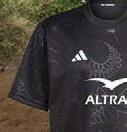

“Sophia was recently back from an OE and although her background was sheep and beef she was doing some work on a dairy farm, so I managed to convert her to dairying properly.”

Clark grew up around Whakatane and studied at Lincoln University, gaining a Bachelor of Commerce in Agriculture majoring in plant production science and agricultural management. The couple could clearly see a pathway in dairying, especially with being able to be selfemployed and build their assets.
Next was a 50:50 sharemilking role with a 250-cow herd just north of
Matamata, where they spent four seasons before they got the opportunity to move to their current farm, which has proven to be a great move.

“The herd particularly has been an incredible opportunity for us,” Clark says.
“And we’ve enjoyed learning more about farming on rolling contour and a different soil type.”
When he does get off farm, Mills has been trying to catch a marlin – and it is not for lack of trying that he has not caught one yet.
The couple have a two-yearold daughter, Claire, who is very involved in farm life and Clark is into her gardening, preserving and baking, taking home many titles at the local A&P show.
They were heavily involved in New Zealand Young Farmers but since they have aged out they have graduated to a local group known as MAFS, middle-aged farm sharns.


“It’s a really good way of meeting people, we get together once a month, go have a beer and a look around someone’s farm then have a BBQ or potluck and a few more beers,” Mills says.
“It’s family-friendly too, everyone has kids ranging from babies right up, and we have a group chat to keep in touch.”
The local group caters for all types of farmers so it is a good way for them to connect with other dairy farmers in the region.
“It’s massively beneficial for farming advice, getting tips and tricks from each other, and it can be a relief to see others are facing the same
challenges as you, which you don’t realise till you go to a get together like that.”


Mills entered the New Zealand Dairy Industry Awards when he was early in his managing roles, but found it challenging to put enough effort in as he was still learning so much about his new career path. He and Clark entered the share farming category
together last year and they found it good for networking but knew they did not put in enough to reap the full benefits.
“It’s a great system but you really do get out what you put in and we had a lot going on so just didn’t dedicate enough effort to it.
“We have met some really good people through the awards though.”
They took part in a Mark and Measure course through DairyNZ, which was extremely valuable for their business.
“It was a real eye-opener, such a well-structured course and so useful for us in our business.”
The couple have big goals but no specific timeline; they like to take opportunities as they come. The ultimate goal is farm ownership but for now they are striving to achieve similar production on OAD
while balancing the lifestyle for the team better.
They found it was a big step going from sharemilking 250 cows to 500, especially purchasing such a valuable herd, so they are focused on reducing debt for now. They recognise farm ownership would be another big step and are toying with ideas of a potential in-between step to help grow more equity.
“There are plenty of ways to get where we want to go so we are looking at our options.
“The long-term goal is to own a farm that is large enough to eventually support a contract milker and maybe even a sharemilker, so we know it’ll need to be 400-plus cows.
“But for now we are focused on our herd and building the confidence of the OAD system for both our business and our farm owners.”

Sam Whitelock Farmstrong Ambassador
Keeping in shape mentally and physically helps you put the best into the farm, so the farm can give the best back to you.
“We are trying to make sure we get as much milk in the vat as possible to try to achieve the same production as we do on twicea-day.”
Aaron Mills


















cross New Zealand this year, 4000 men will be told they have prostate cancer, making it this country’s most diagnosed cancer, and the second leading cause of cancerrelated death in men.
The Prostate Cancer Foundation of New Zealand (PCFNZ) is committed to being the voice of more than 42,000 men living with the disease in New Zealand, advocating on their behalf for better health outcomes today, and for future generations.
Now in its 10th year, Blue September is PCFNZ’s biggest fundraising event of the year and a month dedicated to raising awareness of prostate cancer.

It’s hoped that BLUE DOs up and down the country will raise more than $1 million of much-needed funds, with every cent going towards providing essential wraparound support services for men and their whānau living with prostate cancer.
The foundation’s chief executive, Peter Dickens, said they’re excited to see the nation once again painted
blue in support of the thousands of men living with the disease in NZ.
“Every year just gets better; we are blown away by the support we receive from across New Zealand during Blue September.
“Without the passion and commitment shown to us by our Blue September community, we would not be able to provide the services that patients and those close to them rely on every day across the country.”
In addition to supporting the essential services the charity provides to those affected, funds raised are used for research into the disease and its impact, and to create awareness through education and outreach programmes.
They also enable the foundation to advocate for better access to diagnosis and treatments that are so desperately needed, including calling for a nationwide screening programme similar to the breast, bowel and cervical cancer programmes.
There is a dangerous myth that men don’t die from prostate cancer, they die with
it, and that it’s an old man’s disease. That’s just not true. It’s devastating that in NZ we lose around 700 every year to this terrible disease.
PCFNZ wants men to start talking about their health and taking positive action because if it’s caught early, it is also very treatable and so many more options are available to them, Dickens said.
“It’s extremely frustrating and New Zealand’s most diagnosed cancer should be an issue of national concern.
“Despite the evidence pointing to early detection and appropriate treatment making the difference between life and death, methods of detecting the disease, treatments and medicines for prostate cancer patients that are publicly funded in other countries are
severely limited here, or even non-existent outside of the main centres.”
Whether it’s a chat around the BBQ or having a yarn while walking the dogs, Dickens said, a major goal of Blue September this year is to get men to talk about prostate cancer.
“We have come a long way, but the truth is all men over 50 need to chat to their doctor about prostate cancer as well as insist on a programme of PSA testing appropriate to them.
“This is even more important if they have a family history of prostate cancer, in which case they need to do it much earlier.” n
To find out more, or to register your BLUE DO, visit www.blueseptember.org.nz
Perrin Ag is holding workshops throughout September to help farmers get on top of regulations and make compliance easier and less costly for them.
The firm’s Empowering Farmer Compliance Workshops will help farmers identify what they can do themselves, where they might need additional support and where to go for help.
Many farmers are feeling overwhelmed with the increasing compliance requirements for their business, Perrin Ag consultant Rachel Durie says.
“With margins squeezed, budgets are tight, so the more
farmers can do themselves, the less costly it is for them.
“These workshops are designed to help farmers who are unsure about where to start but want to undertake some of the requirements themselves and put a plan in place to make it happen.
“Knowing where their gaps are and what support they need will also help farmers extract better value from any consultants they go to for help.”
From environmental, biodiversity and health and safety compliance to service tenancies, animal welfare and biosecurity, the workshops will give farmers the tools they need to tackle them all.
The sessions will be
delivered to small groups of no more than 16 farm businesses at a time. Content will be tailored to farm type and location to take local regional council rules into consideration.
Designed and led by Perrin Ag, the first workshops will be held in Waikato, Bay of Plenty, Northland and Manawatū.
Content has been developed in partnership with the regional councils and in collaboration with key industry groups and experts in certain areas of compliance.
The Perrin Ag team will tailor each workshop to the needs of the farmers participating. They will prioritise areas of compliance





where there is the most interest, address concerns and answer questions along the way.

“The workshops and takehome resources provided will help farmers prioritise their business’s immediate compliance needs and identify where they need to invest first,” Durie says.
“It’s about empowering farmers to take control and address issues themselves or help them understand where they can go for help rather than spending endless hours researching online.”
The first workshop is scheduled for September 2023, and space is limited. More information is available at the Perrin Ag website.
Emma Carne wanted to be an airline pilot, but a foray into dairy farming to fund her flying lessons instead launched her career in the dairy industry.
More than 20 years later, she has joined CRV as the company’s new AB services manager.
It was the year 2000 when the self-confessed former townie took a milking job on an Eltham dairy farm.
Today, she’s still as passionate about the industry.
“I always thought I wanted to be a pilot. But with no dairy farming background at all I took a job on an Eltham dairy farm milking to help pay for my flying lessons and I never
looked back. I milked there for a few months and in that time I fell in love with cattle.”
Born and bred in Manawatū, Carne comes to CRV with a solid foundation in the New Zealand herd improvement
industry, including working as an artificial breeding technician, managing artificial breeding facilities and working in sales and herd testing.
“What I love about the job most is the collective goal we’re all working towards, which is getting the best cows on the ground for the next generation for farmers,” Carne says.
She will have her hands full this coming mating season with about 150 CRV AB technicians and their loaders to manage across the country.
With 3.94 million cows artificially inseminated each year in NZ, the dairy industry is crying out for more technicians.

Attracting new recruits will be a priority for Carne, alongside organising her technicians’ runs and managing any challenges that crop up during the season.
“There is always a need for more technicians in the industry. AB techs are renumerated well, but in my experience, the part people end up loving most is meeting the farmers and working with them. It certainly is a special industry to be in.”
While Carne has been busy learning the ropes at CRV, attending fieldays and travelling to the South Island for AB training schools, her key goal for the season is making sure her technicians are wellresourced and supported. n


A BVD outbreak could cause:

• Decreased milk production
• Poor conception rates
• Persistently infected calves
• Abortions, mummies, and stillbirths
The most devastating impacts of BVD are on pregnant cattle and their unborn calves, so protecting heifers and cows from infection during mating and gestation is critical. Protect the health of your herd by keeping your herd BVD free with Ultravac BVD®. A premium foetal protection vaccine proven in New Zealand.1 See your vet today.







Nominations for the Fonterra board of directors’ election have opened, with two farmer-elected director positions to be decided.

This year Brent Goldsack and Cathy Quinn retire by rotation. Both will be standing for re-election.
The independent assessment process will be run first, with a nomination period running from August 4-18.
The resulting candidates will be assessed by a panel of three governance experts.
This year, the panel comprises of Joan Withers (chair of The Warehouse Group), Rob Campbell (chair of NZ Rural Land and Ara Ake) and Patrick Strange (chair of Auckland International Airport). Their role is to shortlist and recommend the best candidates to Fonterra’s shareholders.
The returning officer will announce the independent assessment process candidates on September 18.
The non-assessment process, where farmers can put themselves forward as a candidate for the board outside the independent assessment process, will follow with the nomination period running from September 18-28.
The returning officer will confirm all directors’ election candidates on Friday September 29.
The director election will be held using the first-pastthe-post system via postal and online voting by eligible Fonterra shareholders.
The Independent Assessment Panel search brief along with the Candidate Handbook are now available from returning officer Warwick Lampp from electionz.com.
These documents provide prospective director candidates with information on all aspects of the election process, including details of the skills and attributes that the board is looking for in 2023.

Nominations for the Fonterra Co-operative Council and the directors’ remuneration committee elections will be called for on September 12, and close at 12pm on September 28.

Fonterra supplying shareholders are eligible to stand in the Fonterra elections. Candidates must satisfy eligibility requirements to be elected, and further procedural requirements are specified in the election rules and the candidate handbooks.

At the end of her calf-rearing, beef-breeding, plant nursery and AB tech day, a multi-talented Matamata farmer and DWN member opens her hair salon out by the implements shed.
There are Jills of all trades, and then there is Rachel Usmar.
The Matamata farmer’s long list of on-and off-farm vocations underlines a passion for wanting to try everything.
She balances calf rearing, dairy farming, maintaining a native tree nursery, working as an AB technician during mating and as a hairdresser, has established a beef stud, and is actively involved in the Dairy Women’s Network.

Critical to being able to achieve all this is forging good relationships with farmers and
rural professionals around the district.
She believes those connections are earned through trust and her work ethic, saying she would not be where she is today without these people, and they are also ready to help her out if called upon.
“Everyone still supports me to this day and that’s so cool.
“I’m pretty lucky in terms of the people that are helping me. They’re all friends helping me.”
Usmar grew up on a farm with most of her extended family working in the rural sector.
After leaving school at 16, she worked as hairdresser for 16 years before buying a property and becoming a calf rearer, rearing spring and autumn calves.
“I did a few things in between but never felt fully satisfied just being a hairdresser. I always felt like I had a bigger purpose in life,” she says.
She bought a 4ha block near Matamata where this year she is rearing 100 calves, which are mostly Friesian bulls but also include a small number of Speckle Park X and Jersey heifers.
At peak, around 450-500
calves are reared from four to seven days old, to 100-110kg.
The reduced number this year is so she can devote more time to her dairy farm, which is a five-minute drive away.
She sources the calves from local farmer contacts developed over the years. Upon arrival, the calves are in pens according to their age and are fed a mix of calf milk replacer with a probiotic, hay, meal and water.
That feed mix continues as they get older and are shifted to a nearby outside paddock to transition onto grass. When they reach 85kg, the calves
are weaned off milk and onto pasture.
Usmar also keeps a close eye out for signs of animal health issues; any that show signs of sickness are separated.
The calves are sold onsite to finishers who take the calves through to a killable weight.
Fonterra’s new rules around ensuring all non-replacement calves have a value stream has prompted Usmar to aim for a zero-bobby policy on the dairy farm, where those calves are brought back to the rearing property.

“That’s a goal of mine with my herd. I want to try and have it so 100% of the calves are reared.”
Her plan is targeted AB for her replacements using sexed semen on the more crossbred and Jersey cows and an Angus bull from her stud for the more Friesian-looking cows to boost their value to finishers.
She is also into her ninth season as an AB technician for LIC and along the way –including this season – has trained five apprentices.
“I would feel like I would be missing out if I stopped because I’ve had the same
‘run’ for all of those years and they’re like family.”
These regular clients have also helped her foster relationships in the local farming community.
is contracted to grow 5000 this season for a riparian development project.
The idea of establishing a native nursery to grow plants for dairy farmers for riparian planting came after Usmar was helping her uncle with some fencing on his farm at Miranda on the Hauraki Plains and needed a large amount of plants.
A friend who owns a nursery helped her get going and she grew enough to help him out. Any extras were sold to farmers.
farm’s implement shed.
“I usually do my hairdressing clients after milking or at night or during the weekends.”
Her latest venture is beef breeding, having created Mangawhea Angus – named after a nearby waterway.
It started with her purchasing some in-calf Angus heifers from local studs last year with these cattle due to calve shortly.
Over the past two seasons, Usmar has also run a native tree nursery, aiming in part to get plants into schools to educate children about the industry.
“I ended up taking some dirt and some seeds into town and showing these kids how to propagate mānuka seeds. We then went out onto a farm and planted them out onto a waterway.”
Last year the nursery grew about 10,000 seedlings and
The seedlings mostly grow themselves apart from weed control, with most of the labour occurring when the plants arrive and she has to transfer them into their own pots.
Last year she stocked 10,000 native seedlings and this year has steadily increased that amount as demand increases.
Those seedlings will start arriving at the end of August and Usmar aims to have the potting completed by the end of November.
She also keeps hairdressing with a group of loyal clients coming to her salon built on the end of the calf-rearing
Once she has built the numbers, she wants to use these Angus genetics in her dairy herd to mate the non-replacement cows and raise the Angus-cross calves for hopefully an improved return as well as selling any of the Angus bull calves to beef breeders.
A major supporter of her endeavours has been husband Jared, who works as a ground-spread fertiliser truck operator, contracted to a local ground-spreading business.
Asked how she manages these tasks, she laughs: “You could say time management is one of my strengths. I wake
Continued page 34
“I did a few things in between but never felt fully satisfied just being a hairdresser. I always felt like I had a bigger purpose in life.”
up in the morning and I say, ‘I’ve got this and this to get done and what’s the most efficient way of getting it done?’”
Three seasons ago, she worked as a farm assistant on a nearby farm milking 200 cows. She contract milked 230 last season on a different farm before farming herself on a leasing arrangement on another farm for this season.
That farm is a 65ha property on rolling hills that milks 200 cows.
The dairy farm operates as a typical spring-calving, medium-intensity system using pasture first along with an in-shed feeding system to ensure the herd gets mineral supplements. Grass silage and baleage are used as supplementary feeds.
Usmar has one staff member, Cole Mitchell, who is helping her out over calving until the end of August before
returning to his job as an LIC AB technician.
She has arranged for another person to help her on the farm through mating in late September, while she is also working for LIC.
having joined to meet other like-minded women. Over the course of that time she realised the business and leadership opportunities that existed within the organisation.
“I never realised those opportunities: personal growth and business growth and the people you meet, it comes back to those relationships again from the people that I’ve met.”
She is a committee member for the 2023 Brighter Braver Bolder conference and a member of DWN’s Te Awamutu Business Group.
of the Year for 2023 at the organisation’s annual conference in Invercargill earlier this year.
Usmar said she felt humbled winning the award, finding it hard to believe that her everyday actions inspired others.
“I just do it because I love it,” she says.
Looking ahead, Usmar says her next big goal is farm ownership, with a tentative goal to achieve that in the next five years.
Usmar credits the Dairy Women’s Network with playing a big role in helping her over the years.

She has been a DWN member for four years,
This June, she has taken over as DWN’s Waikato regional hub leader, helping DWN regional leaders in the region on their own leadership journeys and helping them run events.
It caps off an impressive year for Usmar, who was named Regional Leader
She says she does want to continue being an AB technician because she enjoys getting off the farm and interacting with other farmers.
Where that leaves her other businesses is something she will assess when the time comes, but they will be hard to give up simply because of the joy they give her.
“I love calves, and that’s why I still do them.” n
“You could say time management is one of my strengths. I wake up in the morning and I say, I’ve got this and this to get done ...”Rachel Usmar has started her own Angus stud and plans to use their genetics to mate with her non-replacement dairy cows to help boost the value of the resulting calf.








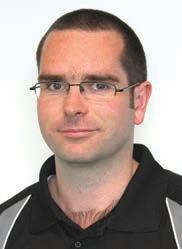 solutions and development manager
solutions and development manager

Reflecting on the past five years, farmers should be proud of the work they have done to improve wintering practices.
We have come a long way and are getting recognition from councils and the government about positive changes that support the welfare of animals and the environment.
Talking to farmers across New Zealand for DairyNZ’s Winter Grazing Survey confirmed there is steady progress in wintering practices. Some big wins include:
• 95% of respondents with water in or beside their crop paddocks had a riparian buffer with an average width of 9m.
• 84% of respondents had a written wintering plan.
• 70% of respondents change grazing direction, often to avoid high-risk situations.
Having such high proportions of respondents carrying out these actions shows many farmers are focused on doing the best over winter.
To keep up this momentum, now is a good time to be considering your set-up for next winter.
Successful wintering starts with choosing suitable paddocks in spring, well ahead of winter. Many farmers avoid paddocks with waterways in or adjacent to crop, with almost all farmers having stock excluded and buffers wider than the minimum standard.
Considering the whole picture when choosing paddocks is also important. Our results showed 65% of paddocks were selected based on pasture renewal, while only 20% were based on risk criteria.
Having a broader picture is more important than being focused on pasture renewal alone as it is more likely low-risk areas will be selected.
Factors to consider include paddock
slope, critical source areas, and waterways and flood risk.
A great place to start when selecting paddocks is reflecting on this past season and, looking at paddock history, consider:
• Did your chosen paddocks hold up well?
• Would you choose the same paddocks again?
• Would you do something different based on what you have seen? These questions can help shape your paddock selection and winter planning, and help to identify low-risk paddocks.

In cold, wet and windy conditions, cows can experience discomfort. Where possible, plant crop in paddocks with good shelter.
with DairyNZAlternatively, allow a feed buffer in your budget to account for feeding extra on cold, wet or windy days, and note this in your wintering plan.
Contractors are an essential part of a successful wintering set-up, and working with them and effectively communicating helps avoid issues arising. If you use a contractor for spraying and establishing crop, contractors find it helpful to be told which parts of paddocks to avoid.
Programmes like TracMap can be used to identify exclusion zones, or put up temporary fencing around areas where crop should not be established. Another alternative is to provide a hand-drawn map.
Getting everyone on the same page, along with making a few key decisions around paddock selection, will help set you up to winter well in 2024. n
For more information and tips visit dairynz.co.nz/wintering

“If you use a contractor for spraying and establishing crop, contractors find it helpful to be told which parts of paddocks to avoid.”
Stake your claim in Bayleys’ Country portfolio – New Zealand’s leading multi-channel real estate campaign, showcasing the finest rural and lifestyle properties for sale nationwide.
The start of spring, traditionally the busiest on the real estate calendar, means more eyeballs on New Zealand properties, with the growing season presenting an excellent time to maximise your seasonal advantage as a seller of rural real estate.

As one of the most effective and exclusive marketing channels Bayleys’ national portfolio, Country - spanning print, digital, social media and direct marketing - reaches further. This provides exposure to our extensive network, and international database of qualified buyers, designed to deliver an ‘Altogether Better’ sales result. Kiwi-owned and operated for 50 years, Bayleys is innately New Zealand and proud to be the country’s #1 rural real estate brand, consistently utilising innovative marketing techniques to be the difference between a good and great result for the sale of your rural and lifestyle property.
Find out how to realise your rural property’s potential with Bayleys Country this spring.


Sam Henson has tried his hand at a couple of trades, but there are several reasons he always comes back to dairy.
Temptation got the better of Sam Henson on a few occasions and he was enticed out of dairy farming by the promise of more money or the rare luxury of weekends off.
But it never took him long to realise where his true passion was and he is now in his third venture in the sector, managing 350 cows in Himatangi, Manawatū.
He enjoys the freedom and chances to succeed and appreciates the opportunities and lifestyle of dairying.
“I like the flexibility that dairy farming offers. If there’s something on during the day I can make it work to be able to go, and I enjoy not being micromanaged,” Henson says.

“But ultimately I enjoy being able to get the results I want.”
He grew up on a sheep and beef farm and did an
automotive course after secondary school, thinking he would become a mechanic. But he got a relief milking job and decided to give farming a crack.
“By the end of my course, I was offered a full-time farming role. It was a threemonth fixed-term cover till the end of the season then I went straight into another job across the road on a split calving farm.”
He quickly moved from a farm assistant into a 2IC role, and onto managing another farm nearby soon after. But after a couple of seasons managing he decided to leave farming and head to Australia to work in warehousing and experience a different life.
“I needed a break from farming. I didn’t want to work weekends anymore and the pay was pretty good in Australia. I had a few good friends over there and I was


ready for a change,” he says.
A couple of years down the track a friend approached him to return to New Zealand to help with a farm going through receivership in Waikato. Henson was only in a 2IC role, but there were 1700 cows and a few staff to manage.
It sparked his interest in farming again but he decided he would rather head back to Manawatū to be closer to family. By then he had his daughter Lucy to consider and knew a farming lifestyle worked well with family life.
His favourite role was managing a 650-cow farm in Rangiwahia, not a typical dairying area but it offered a great lifestyle for a keen hunter and he immersed himself in the community.

A few years down the track he and his partner, Paula Simpson, decided to invest in property and wanted more time to spend with the kids. By this point, they had the twins, Max and Mason, too.
He took a role with Frank Construction, and they moved closer to town. His role involved concrete polishing, waterproofing and installing jail doors. It kept things interesting, and Henson was dumbfounded at the idea of having so much time off over Christmas.
“At the beginning of December, the boss said we’d wrap up on the 20th and wouldn’t come back till
the end of January. It was a different experience,” Henson says.
But, “although that was a great change of lifestyle, I missed being outside, so after a couple of years when the owners of the Rangiwahia farm rang for a hand, it was a great segue back”.
He filled in for three months between a manager leaving and sharemilker starting, then moved on to his role in Himatangi.
“Now I’ve got the best of both worlds. We’re in a more convenient location for the family and juggling the kids’ activities, and I’m back on the farm.”
This is his fourth season in Himatangi. He has one team member, and they are operating a System 3. It is mostly pasture based with some palm kernel and maize when needed.
“I do enjoy being able to go home for lunch and although they’re at school during the day it’s good to see the kids more in school holidays and make it to their events.”
Over the years he has looked at sharemilking roles but he has ended up thankful he never took them, like when the payout hit $3.90/kg MS. He would consider it if the right job came up, or possibly contract milking, but he is still determining the risk of taking on large amounts of debt.
“I enjoy what I do, I’m happy with running a farm
successfully and I appreciate the opportunities across the industry.
“Dairying is a great way to build equity, particularly if you want to buy property. You can

earn, build up KiwiSaver while not paying rent, for example.
“And funnily enough there are fewer rules and regulations than other industries.” n
A new plan will give farmers more places to drop off their recyclable plastic for collection and help build even greater on-farm sustainability.
Plans are underway to create a more formalised plastic recycling scheme across the rural sector that mandates the re-use of certain types of plastic.
The new scheme will be based on a consultation document created by AgRecovery that was recently presented to the government.
“We have consulted on how to do it, and they are going to consult on how to make it into a legal process. The focus there is around voluntary membership and making it mandatory,” AgRecovery chief executive Tony Wilson said.
It will initially target the “four big plastics” – silage bale wrap, plastic agrichemical containers, large fertiliser bags and smaller bags.
“The aim of it is that we’re moving away from a voluntary scheme where these producers or manufacturers pick and choose if they want to belong, to where it’s mandated,” he said.
AgRecovery wants to run the scheme and has applied to become as an accredited public steward organisation (PSO) to enable it to do so.
The drive behind this is due in part to central government, but most of it is coming from the farmers themselves, Wilson said.
“They’re having to prove to their end customers or the customers they are sending
their product to that they are being sustainable.”
That proof is tied in to the sustainable dairying programmes run by the dairy companies, such as Fonterra’s Tiaki scheme or Synlait’s Lead with Pride.

“It’s great to see the likes of Fonterra realising how important it is and making it more compulsory or incentivised for the farmer to do the right thing.”
For farmers, it will mean more places to drop off their plastic for collection.
“It’s a different way for the waste to get moved and I’d put my hand on my heart and say that it would be costing the farmer less giving us the plastic than taking it to a landfill.”
Everyone has a role to play in plastic recycling, he said.
“If we get this right and we get all of this plastic back. NZ Inc benefits from it because we’re selling products at a higher margin overseas. We all win from that and it’s really important that we get that right.”
One of the guidelines for AgRecovery to follow as a PSO is that everything that is collected must be recycled in a circular economy.
being properly recycled into products such as building insulation or car parts.
It is not just farmers – there is a lot of plastic that is used across supply chains, and Wilson said AgRecovery is interested in exploring ways that it can assist with that aspect of recycling.
“Whether its stuff like shrinkwrap on pallets that move through the supply chain or the re-bagging of bags, we need to make sure all of that plastic is brought back into a scheme so it can be recycled.”
A mandated scheme would be funded by a levy that would fund the vehicles used to collect the plastic and manage the collection sites.
That levy will be placed on the plastic manufacturers or the brands for every measure of plastic created and put into the market as a product.
While there could be a small increase in pricing at the farmgate, Wilson said with it being mandated, everyone would paying for it.
This means the plastic must be in a state that it can be re-used. AgRecovery can get hard plastics processed in New Zealand, but soft plastics have to be sent overseas.
“The thing with the product stewardship scheme is that we’re not chasing the dollar, we’re chasing the plastic and we are rewarded by showing that we are recycling more plastic, not that we’re making a profit because we’re a notfor-profit charitable trust.”
As a result, they use only A-grade recyclers to ensure that the plastic is
Wilson hopes to match the recycle rates in Europe, which sit at around 85-90%. By comparison, NZ’s rate is around 50%.
“We have a big task ahead of us to get to those levels. We’re really keen to do it, but we need everyone’s help to get there.”
Viewing plastic as a resource rather than as a waste product will greatly help lift those rates.
“It’s a steep change and we really need to think outside the box in terms of innovation and I think farmers are up for that.
“No one wants to bury or burn on the farm anymore. They want to get it back again to be re-used.” n
“No one wants to bury or burn on the farm anymore. They want to get it back again to be re-used.”
Tony Wilson
Leigh and Tilly Kees have made sustainable choices by not letting much go to waste in the years they have farmed Wangapeka Farms at Little Wanganui, northwest Buller.

“I farm how my generation did, looking at the land and working with it for the best outcome for my animals,” Leigh says.
cows once a day, producing over 400kg milk solids per cow. Leigh buys in pure-breed beef bulls to put over the dairy cows that fall outside their A2 breeding plan.
The bulls produce a larger dairy/beef cross calf that is hand-reared until weaning.
More recently Greg and Amy updated the milking platform as well as installing an in-shed feeding system to increase minerals to the cows.
Greg said changing the configuration allowed for more efficient access, milking, animal health and general streamlining of processes.
recycled fence post provider Repost.

The company recycles viticulture waste into durable low-cost fence posts, selling half and quarter rounds in 1.6m and 1.8m lengths. It is based in Marlborough and recently expanded to Hawke’s Bay.

Repost owner Greg Coppell is a fifth-generation sheep and beef farmer based in St Arnaud, Nelson. His father, Allan Coppell, and previous generations were dairy farmers in Tākaka, Golden Bay.
Their farming background means they understand that
farming has big ups and big downs.
Having Repost, a resource that is still affordable in tighter times, is a big help.
Repost makes mandatory compliance in the sector financially accessible and sustainable for farmers, Amy says.


“We couldn’t get past the low prices. They are good quality and I didn’t have a problem installing them. Our fences are 1/8 one-quarter rounds using two hot wires installed using tractor/post driver.

“We sold some bundles onto five other farms too.”
Amy Kees
Son Greg and his wife Amy moved onto the farm in 2020 after Leigh and Tilly decided to semi-retire. They have since grown their family with son Arlo, now 4.
They milk 450 Kiwicross
“My grandparents and parents have done an amazing job on this farm with huge sacrifice and drive to develop it to where it is today. I always wanted to continue the legacy and we feel privileged we are,” Greg says.
Greg and Amy have continued his parent’s work by fencing over 7km of waterways, wetlands and ditches. This gained momentum in 2020 when they came across low-cost
“We couldn’t get past the low prices. They are good quality and I didn’t have a problem installing them.”
A fourth-generation West Coast farming family gets some help on fencing costs as it continues to make sustainable changes.Amy and Greg Kees with their son Arlo want to continue the legacy left on the farm by the previous generation.
Collaboration with SABIC AN is key to supporting Ravensdown’s commitment to reduce carbon emissions, CEO says.
The first ever global shipment of lowcarbon urea has arrived in New Zealand through Ravensdown, signalling a major step in the co-operative’s shift to a lowcarbon future.

The 2700 tonnes of urea from Saudi Arabia make up the first international shipment of this product from SABIC Agri-Nutrients Company (SABIC AN).
The urea is created using carbon dioxide that is captured during the manufacture of ammonia instead of being released into the atmosphere. Ammonia is a base product for urea; it is combined with CO2 to create urea.
Testing, inspection and certification agency TÜV
Rheinland has confirmed that the urea manufacturing process produces 64% less CO2 per tonne of urea than standard processing.
While it is manufactured using less carbon, the properties of the urea remain the same.
This means emissions generated by the use of the urea on pasture or crops does not change and the low carbon advantage is captured as a Scope 3 (indirect) emission only.
Ravensdown chief executive Garry Diack says the collaboration with SABIC AN is key to supporting Ravensdown’s commitment to reduce carbon emissions by 50% by 2030.
“As pressure mounts for
New Zealand farmers to lower greenhouse gas emissions from behind the farm gate, we are proudly working on their behalf right through the value chain to support them,” Diack says.
“SABIC AN’s innovative manufacturing techniques for urea production have the potential to be gamechanging for the global fertiliser industry. We are excited to continue our valued collaboration with a company that has environmental goals and aspirations that are very
aligned to our own.” Ravensdown is discharging the shipment at Timaru Port.
“We continue to develop our 25-year relationship with
SABIC AN, working together on future innovations to reduce the carbon footprint of the whole supply chain,” Diack says.
Farmers and growers across New Zealand are being encouraged to enter the Ballance Farm Environment Awards and help continue to grow a healthy future for farming.
Run by the New Zealand Farm Environment Trust (NZFET), the awards champion sustainable farming and growing and celebrate good practice and innovation across the primary sector.
NZFET general manager Sarah Harris says that for farmers and growers, being part of the awards programme is a positive way to receive feedback on their business, help identify strengths and learn from others who are passionate about the food and fibre sector.
Through the Ballance Farm Environment Awards
(BFEA) programme, farmers and growers have the opportunity to showcase, benchmark, and improve the sustainability of their operation in a constructive process where agribusiness professionals provide feedback, recommendations and commendations.
The judges take a holistic approach to the feedback and award-allocation process by evaluating the overall farm system, including water and soil, climate stewardship, biodiversity, waste management, people and wellbeing, business health, biosecurity and animal care.
After a successful introduction, Harris says the BFEA will again feature the Catchment Group section.
“This section will continue to showcase the great work being done by catchment
groups throughout New Zealand, from our high country to the lowlands, uniting our rural and urban communities along the way.”
The Catchment Group Showcase recognises the efforts of a rural community working together to improve water quality in local rivers, streams, lakes and wetlands. The initiative is designed to help inspire other communities with examples of good practice.
The BFEA programme is supported by leading agribusinesses and regional councils, many of whom sponsor award categories and provide professional advice and feedback to entrants through the judging process.
Entries can be found online on the NZFET website. n
Farmers are being warned that reducing herd sizes and supplementary feed levels as a way of curbing costs may come back to bite them over the long term.

The stuttering milk price and high input costs are creating ongoing financial challenges for farmers this season, but, says GrainCorp Feeds general manager Daniel Calcinai,solutions need to be farsighted.

“Reducing your herd size and cutting out supplementary feed may not be the best option and could affect the profitability of some farm businesses over the next few years, not just this season.
“Farmers need to take a
long-term approach to their decision making to minimise
risk
While prioritising the use of homegrown feed, the best thing farmers can do is review inputs, including their herd’s total diet, and create a base feed plan, including costs and income.

“It’s about maximising the utilisation of home-grown feeds and then adding the right supplement to complement the seasonal pasture conditions and the cow’s diet. Our goal is to improve rumen function and feed conversion efficiency in a cost-effective way.”
Making sure cows are efficiently turning feed into milk will be crucial as farmers start exploring ways to reduce their on-farm emissions, he says. n
“We
utilise regional pasture analysis, diet check and tracker to identify gaps, set targets, create plans and monitor results, for real time, fact based decision making.”
Two wetlands drain a Northland farm that has set out to have no impact at all on nearby freshwater resources
Wetland development, riparian planting and reduced sediment losses to waterways were highlighted at the field day for the 2023 Ballance Farm Environment Awards supreme winners in Northland.
Andrew and Vicky Booth of Jade Dairies at Titoki near Whangārei, are 50:50 sharemilkers on the 220ha family farm (174ha effective) for Andrew’s parents, Richard and Sharon.

They also employ Bill Hamilton, who won the 2023 Dairy Trainee of the Year national award.
Ninety percent of the farm is drained through two wetlands, one pre-existing and never modified and the other newly retired, fenced and planted under Andrew’s management.
The Booths aim to have zero impact on surrounding freshwater, so the farm is run with careful use of nutrients and a good understanding of high-risk areas.
The wetlands trap nutrient run-off before water leaves the farm.
Two-thirds of the farm is top flat plateau with volcanic and peaty soils and the remainder hillsides going down to river flats, with silty loam and clay soils, along the Mangakāhia River.
Andrew says the river, flats and wetlands have flooded 16 times in this extraordinary season of way above average rainfall.
Some smaller plants have been lost or lodged and
a covering of silt remains over the hardy species like coprosma, mānuka and flax.
Andrew and Vicky are in their 13th season on the farm, where Andrew grew up as did his father before him.
They are very aware of the potential impacts of climate change on dairy farming in Northland.
“You don’t have to own the land to look after it – we would
do the same wherever we are farming,” Vicky says.
Andrew is a DairyNZ climate change ambassador, and a member of the Dairy Environmental Leaders Group and the Northland Dairy Development Trust.
He is very motivated to be a positive voice for farming, following in Richard’s governance footprints, because the Booths are proud of what the industry does.
“There is so much good stuff happening in farming, not just in dairying, and these awards showcase the good.”
He told a large crowd at the Northland Ballance Farm Environment Awards (BFEA) field day recently that establishing a big wetland may look like a Herculean task but it can be accomplished by beginning with good planning, short bursts of labour and perseverance.
All avenues of outside help have been followed, including
planting days by children and parents from local schools.
Andrew says the purchase of plants and the planting were not overly expensive, but some regular maintenance is required and should not be neglected.
The wetland plan was drawn up five years ago and approved and co-funded by the Northland Regional Council (NRC), which had many land management officers and elected representatives present at the field day.
NRC is evidently proud of what has been achieved on the Booth farm, and its example to other landowners within the Kaipara Moana Remediation programme, because the Mangakāhia joins the Wairoa River and the Kaipara Harbour.
The presence of the Australasian bittern (matuku hūrepo) is a welcome sign of success.
The farm follows Fonterra’s figures on greenhouse gas emissions, generated from the regional benchmarks, cow numbers and the fertiliser spreading histories.
They show that Jade Dairies is below average on biological emission figures – 9.5kg CO2e/ kg milksolids, 7139kg CO2e/ha in methane, 1566kg in nitrous oxide and 8705kg/ha in total.
“Now we have reliable numbers there are a few levers to pull, like putting on less nitrogen, increasing feed efficiencies and breeding more efficient cows,” Andrew says.
Climate change is evident through lack of frosts and
“Now we have reliable numbers there are a few levers to pull, like putting on less nitrogen, increasing feed efficiencies and breeding more efficient cows.”
Andrew Booth
more extremes in weather and the responses include reducing stock numbers, conserving more farm-grown fodder and using newer pasture cultivars to keep kikuyu infiltration down.
Jade Dairies is full autumn calving with 390 to 400 cows, having changed over from spring calving and reduced cow numbers by 25 to 35.
Milking through winter suits the farm soil types and pasture growth rates during the milder winter months. Having dry cows during the summer also takes the pressure off pastures.


Fertiliser applications are planned for each of five main soil types and nitrogen applications are light through autumn and winter.
“We use about 100 units of N per hectare, which is not high, and we apply where we will get the best results,” Andrew says. n
Dairy Trainee of the Year Bill Hamilton is a conservationist at heart who enjoys and is succeeding at dairy farming.
He is employed by Andrew and Vicky Booth, sharemilkers on the family farm at Titoki, Northland. Judges for the National
Dairy Awards said Hamilton, aged 24, is strong across all areas and is an excellent allround farmer. He has a Bachelor of Agricultural Science from Lincoln University and will put his practical experience into work as a rural professional in future.


Hamilton spoke at the field day about the pest control work he enjoys on the Booth farm.
The farm has 18 possum or cat traps and five mustelid traps.

Hamilton read out with pride the tallies of pests caught in these traps.
Dairy Trainee of the Year Bill Hamilton loves encouraging birds into native bush by trapping the pests that pose a threat.


His primary employment as a farm assistant means milking cows and the pest management tasks are designed not to be timelimiting.
“I carry peanut butter and cat biscuits and when I am riding on the bike and see a trap that has been activated I just hop off and reset, not losing any time.
“Conservation doesn’t need to be time-consuming and it is very rewarding.”



The problem isn’t getting the old girls pregnant, it’s keeping them in-calf – and that’s where mineral supplements come in.
The challenge is not getting them in-calf. It is keeping them in-calf.
As the productive levels of dairy herds have kept climbing over the last 20 years, empty rates seem to have increased at a similar rate.
Factors outside our control play a big part in early pregnancy termination, but research in this area clearly shows mineral deficiency can be directly related to early pregnancy termination in dairy cows.

Successfully carrying the foetus through to full term is quite a balancing act. Maintaining a successful pregnancy requires the correct level of energy, protein, as well as a quality source of carbohydrate. In the case of a ruminant, this means good quality fibre.
Also required is a correctly balanced ratio of minerals and vitamins. These are all critical factors in maintaining the very tightly balanced ratio of hormones required in early pregnancy.
Results from a 2017 study show the levels of mineral deficiency in dairy cows may be directly related to the severity of the reproductive issues experienced. This trial data presents a strong correlation between higher daily milk yield and lower blood serum mineral levels in problem cows.
Generally speaking, while energy and protein levels of pasture may improve as the
season progresses, mineral levels in lush green spring pasture are often very low and can reach their lowest level in the spring to early summer months.
Early in the above study, certain minerals were identified as being essential to a successful pregnancy. These are calcium, phosphorus, and magnesium (macro minerals), and zinc, copper, manganese, selenium and iodine (micro minerals).
Macro minerals (those that are required in larger volumes) are essential for energy metabolism, blood flow both in utero and in the developing foetus, as well as for bone marrow and tissue development.
Recent research related to calcium indicates that this element may play an important role in maintaining a successful pregnancy. The
correct balance of macro elements, trace elements, and vitamins is important in the maintenance of healthy enzymes, hormones, and in the synthesis of those essential vitamins that cows are so good at producing in the digestive process.
Increasing empty rates can present a serious economic effect for farmers, and much research is being carried out to identify the causes of this very costly issue.
To date, research shows that conception is easy to achieve – most cows will conceive on their first service. The real challenge is ensuring the cow receives adequate nutrition in order to maintain this initial pregnancy.
A major New Zealand study showed over 85% of cows inseminated will become pregnant on the first round, but only 62% of these cows will
remain pregnant past the first 70 days due to early embryo loss.
While these cows will likely conceive on second or third round mattings, this missed opportunity is increasing the calving spread, costing production, and increasing cull rates.
We can’t take it for granted that our cows are receiving the correct balance of minerals in their feeds. Testing of feeds shows that no single feed comes close to being balanced or supplying all minerals adequate to the needs of lactation, let alone pregnancy.
In fact, modern highly productive grasses are often worse than older, slower growing grass cultivars when it comes to mineral balance, before taking into account depleted soils and regional deficiencies.
Also, each crop has inherent deficiencies, and many contain anti-nutrients (naturally occurring toxins) that can induce mineral deficiencies.
Given the stresses inherent in modern dairying, a combination of high energy feed, adequate fibre, and a finely balanced mineral supplementation programme is critical in maintaining first-round pregnancies and reducing your farm’s empty rates.
Farmers are keeping a sharp eye on costs these days, but the challenge lies in determining what can and cannot be affordably reduced.
It’s crucial to recognise that saving a buck now could cost five down the track. To address this, having access to data and expert advice becomes essential to prioritise spending and make informed decisions for your farming business.
And when it comes to your herd, that is where WelFarm comes in.
WelFarm offers a proactive approach to herd monitoring by consolidating data captured by veterinarians and technicians, as well as collated information from other sources, all in one place.
By comparing this data against regional and national benchmarks, farmers gain valuable insights into their herd’s performance and potential areas for improvement.
Continued page 48


Gain knowledge and practical skills. Lameness is now amongst the top three health issues on-farm and it is costing New Zealand dairy farmers millions of dollars every year.



Course Information:
ASHBURTON: 25 - 29 Sept 2023, 4 - 8 December 2023, and 6 - 10 May 2024.
BOOK NOW: $2,750 + gst per person
This is an intensive 5-day course that covers both the theory and the practice of hoof care and hoof trimming techniques led by our director Fred Hoekstra, who is NZ’s only fully qualified hoof care instructor. Held at DHI headquarters and on local host farms. Register today at dhi.ac.nz

The course was brilliant- it was some of the best learning that I have ever had, I certainly feel more equipped to work with farmers and other vets in hoof trimming and treatment, as well as in a lameness advisory role. The experience has been invaluable to my future career.
Kate Mackersey, Massey University Vet StudentThis allows them to prioritise their investments wisely, ensuring that both time and money are well spent, and potential issues are nipped in the bud, preventing escalated costs in the long run.
Veterinary clinics across the country that become members of WelFarm also become part owners of the platform, ensuring that it stays true to its mission of adding value on farms. The platform remains practical and relevant, incorporating the latest developments in science and knowledge to determine if updates or changes are necessary.
When farms join the WelFarm programme they collaboratively plan the upcoming season with their vet clinic, scheduling various activities at key times. Relevant information is entered into the WelFarm portal, which the farmers can also access.
The portal serves as a valuable repository, containing comments and recommendations surrounding the data, which can be referred back to in future seasons.
More farmers are engaging every season, seeing the need to understand what is happening with their herd to frontfoot any issues, compare to other farms and get tailored support from their vet.
One farmer in particular who has gleaned a lot from WelFarm is Janet Poihipi, who is managing 400 cows near Hawai on State Highway 35 on the east coast.
Following the recommendations from her vet has been a game-changer.
“I see the cows every day, so it’s been valuable having someone else come in and highlight what is really happening,” Poihipi says.
when there were sharemilkers on the farm, which belongs to the Tunapahore B2A Incorporation. When the last sharemilker left in 2019 the trust bought their own herd and Poihipi became 2IC.
She had fallen into dairy farming after moving to the Bay of Plenty from Southland, where she had been working in shearing sheds for at least a decade.

The choice was between kiwifruit or cows and although she had never been around cows, she was keen to give it a go.
Poihipi ended up doing two roles in her third season after going full time, as the manager was on sick leave for over a year.
During a meeting with the trustees and their vets and other support people, the current manager said he would step away permanently due to his health issues and Poihipi was offered the role.
“We signed up to the WelFarm programme through our vets who come out three times a year to body condition score the herd.
has had a massive impact on my own wellbeing.”
She has been able to utilise the WelFarm results to help the trustees prioritise improvements, such as bringing in more feed to increase body condition scores and do some work on the races to help minimise lameness challenges.

“The vets give us great feedback and it’s helped my communication with the trustees with updates about the herd and where we’re at, and it empowers them to be more involved too.”

With the right support she is smashing her reproductive performance and production goals and the farm was a finalist in the Ahuwhenua Trophy Excellence in Māori Farming Award for Dairy in 2021.


“Being part of the WelFarm programme has lifted my own self-esteem knowing the girls are looked after well, which makes my job a lot easier.
“I’ve got a good relationship with our vet, Ben Miller from the Veterinary Health Centre, and I trust his recommendations.”
Before becoming the manager, Poihipi had spent 17 years as a relief milker
“They do a tail score and look at lameness and a lot of other things around the herd’s health.








“Along with the reports, it’s also a good way to talk with other farmers about what they are doing, problemsolving and just having contact.
“And knowing I’m not alone
“I’m very thankful to Ben and the team at the Veterinary Health Centre and appreciate their help.” n
MORE: Talk
Who am I?
Samantha Tennent is the general manager of WelFarm
“Along with the reports, it’s also a good way to talk with other farmers about what they are doing, problemsolving and just having contact. And knowing I’m not alone has had a massive impact on my own wellbeing.”
Janet Poihipi
The old saying ‘When the going gets tough, the tough get going’ is never truer than when describing the Galloway cattle breed.
When times are tough Galloways do what they do best – convert marginal feed into beef.



The Galloway is named after the Galloway region of Scotland and is one of the world’s longest established beef cattle breeds. They are extremely hardy, excellent foragers and thrive in cold, rough, hilly country.
Galloways come in four breed types: belted, riggit, solid and white. They are a mediumsized beef animal, with a shaggy, double, weatherresistant coat. The cows breed easily and bear calves with a low birth weight.

Gus and Anita Smith own Abergeldie White Galloways in Waipukurau, Hawke’s Bay. Gus is also the president of the Galloway Cattle Society of New Zealand.

The couple’s 125ha farm has a flat frontage that evolves into rolling contour and a very steep back 30-40ha. They have owned the farm since 2010.
“The farm just goes straight up to steep limestone hills. We have a track to the top, and along the top it varies from 150m wide to just wide enough for a motorbike to get through,” Gus says.
They have around 30 breeding cows, 30 two-yearolds and 30 yearlings as well as 250 breeding Dorper ewes
At first they farmed their White Galloways as a hobby, but due to the breed’s ability to handle the tough conditions at the back of the farm and thrive on its rougher grass, tidying it up for the sheep, the

Smiths decided to increase their numbers.
“Galloways can handle being high up on the rough land at the back of our farm. As long as you don’t spook them, they can stand up on land that humans struggle to stand on. They just wander around eating the rough tucker,” Gus says.
The Smiths mostly sell their two-year-old bulls to dairy farmers who use them to get their heifers in-calf. Galloways have small, low birth weight calves that can still be raised for beef, which helps to reduce bobby calf numbers.
“Newborn Galloway calves act like deer fawns. After a calf is born, it gets up, has a drink, and then it’ll find a place to hide and sleep. It’ll stay there until the mother comes back from grazing.
“When you come across a calf in the paddock you automatically look for Mum. When you have a look around you usually notice a cow watching you and you know it’s the mum. For the first three days the calf hardly moves and the mother returns to feed it three or four times a day.”
The Galloway breed once had a reputation for having a less-than-ideal temperament. But the Galloway Cattle Society and modern breeders have worked very hard to eliminate that trait.

“Breeders now have a
This year is the Galloway Cattle Society of New Zealand’s 75th jubilee year and in 2025, NZ will host the World Galloway Congress, which will keep the entire society very busy with the biannual event held for international breeders and enthusiasts of the Galloway breed.
The location of the congress

Galloways are well known for their hardiness, great converters, easy calving with low weight calves and being naturally polled.Gus Smith with one of his Galloway breeding cows. rotates giving people a great opportunity to visit other countries and view first- hand Galloway cattle herds and their different farming management regimes. n
The need to minimise bobby calf production has led to a growing interest in using beef bulls for tailing the dairy herd.
Most dairy farmers prefer to seek out beef bull breeders who specialise in breeding bulls with easy-calving genetics.
James and Ella Bailey own Momona Herefords. They’ve been running their 600ha Tirau, Waikato farm for 15 years.
“We decided on the Hereford breed primarily for
their temperament. Farmers seek out white-faced calves, and the Hereford bulls’ calves provide that physical indication of a dairy beef cross. We sell well-grown yearling bulls that are suitable for mating dairy cows,” James Bailey says.

“We primarily sell our bulls to dairy farmers. Any bulls that don’t make our annual sale are used to tail our dairy farm’s cows. So we try to walk the talk by using the same type of animals that we market to dairy farmers.”
No dairy farmer wants a
stroppy bull around the shed during mating. The Baileys have done a great deal of work on the temperament of their herd, and select their bulls for good temperament alongside growth rate and calving ease.
It’s now very difficult for farmers to find experienced staff. Quiet bulls are essential because many farm staff aren’t used to working with bulls.

“Heats may be missed altogether if staff aren’t wellversed and proactive in heat identification. Whereas a bull will always find on-heat cows,” Bailey says.
“It depends on everyone’s individual farming system and what they’re trying to achieve, but when taking staff and AI technician costs into account, bulls may be a more costeffective option.”
Their bull calves are tagged and weighed at birth to ensure good breeding choices are made around the calves they select as replacements.
They purchase high quality registered low birthweight sires and have learnt from those breeders that it’s important to aim for reliable average birth weights.
“You do want low birth weights, but it’s important to maintain a consistent weight and to not have any outliers.
“Those outliers are what give you calving issues. It’s a balancing act, though,
because a bull calf with a ridiculously low birthweight is never going to get to the size required to mate a dairy cow herd either,” Bailey says.
Most of their clients buy their bulls biennially. They use the bulls for two seasons before sending them to the processor and will often receive their initial purchase price back.
Many farmers utilise split calving or winter milking, so get an extra mating out of their bulls. A two-year cycle is another reason farmers need well-mannered bulls. No one wants a stroppy bull on the farm for two years.
“To get bulls that are big enough to use for mating at 12-15 months old, they must have the genetics to gain weight fast,” Bailey says.
“I think there’ll always be a place for Hereford bulls within the dairy industry. There are changes occurring, such as using collars to identify heats. But farmers have to keep on top of costs and often that just means keeping it simple. Each one of us is fine-tuning our operation or looking over the neighbour’s fence for ideas,” Bailey says.
“We’re just trying to do a good job for our clientele.
People are always welcome to visit and check out our operation and come to our yearling bull sale on the 27th of September.”
The ban on live cattle exports has given some farmers a much-needed boost.

Asurge in autumn bull sales was a welcome surprise for Manawatū sheep and beef farmer Will Morrison. The surge was an unexpected ripple effect from the ban on live cattle exports by sea.

“The ban on live export has left a big hole in the market. I hadn’t thought about how it would change the dynamic in the market so much,” Morrison says.
“But we’ve got farmers that used to use Friesian bulls, targeting the export market, now looking for other avenues for their business.”
Long-standing client Logan Hastings was one of those farmers. Looking at his options after the export market closed, he knew the Hereford breed would give him flexibility.
“We have used a lot of different beef breeds over the years, but Herefords have a reliable market and give us options,” Hastings says.
“We can flex our farming system. Typically we sell half of the Hereford calves to store and finish the rest, but we
can flick more off sooner if we run out of feed, or carry more through to the works. They keep our options open.”
He found with other breeds, buyers were suspicious of Jersey content if they threw any crossbreed markings –but the distinctive Hereford markings from Ezicalve offspring make them a popular choice.
He has been buying Ezicalve bulls for several years, sometimes through the bull
sale or just by calling to order.
“We can ring any time, and we have a lot of faith in their bulls as they’ve been breeding for a long time so they keep getting better and better,” Hastings says.
“And their temperament is great, they’re almost too quiet.
“They certainly won’t injure someone in the yards, they’re just big teddy bears.”
A quiet temperament is high on the priority list for Ezicalve bulls, along with strict
criteria for calving ease, low birth weight, good growth and carcase quality.
Morrison farms near Marton in Rangitikei. The Ezicalve line has been developed with the Cranstone family, who farm closer to Whanganui. It was designed to target the dairy industry, using extensive genetic information to establish lines of bulls to give dairy farmers confidence.
“I was travelling around the United Kingdom in 2006 and had plenty of time on buses so that was when I was hatching the idea and we kicked off around 2007, 2008,” Morrison says.
“And now we’ve been selling for a long time and have a good number of bulls available.
“It’s all about minimising risk and giving businesses options and with the year we’re facing and what’s on the horizon it’s becoming more critical for farmers to reduce risks and maximise outputs.”
More than half of Ezicalve bulls sold go to dairy farms that integrate beef into their system. n

Continued efforts to reduce bobby calves and emissions to meet consumer demands have led to the development of a world first, the KiwiBlue.
The genetics are a collaboration between Woodleigh Belgian Blues and Samen NZ and offer New Zealand dairy farmers an efficiency focused, polled and double-muscled solution to meet future demands in the way beef is produced.

Samen NZ’s Cees van Baar says there has been exponential growth in sales of their short-gestation Belgian Blue genetics.
“There are many benefits to using a specially bred dairy beef sire. The European genetics we have selected for use here in New Zealand have been specifically bred for decades to go over dairy animals.
“The benefits of using such genetics are easy calving, shorter gestation (more days in milk), rapid growth rates and the unique colourmarking capability of the pure-white Belgian Blues.
The KiwiBlue breeding programme was established in 2020 by Samen NZ and Woodleigh Belgian Blues.
Since then, together they have bred a number of KiwiBlue sires. The KiwiBlue is a combination of the best European Belgian Blue genetics and Woodleigh Belgian Blues’ unique polled Belgian Blue genetics.
There are a number of KiwiBlue sires now collecting and all are pure-white and Pp (heterozygous polled), ensuring all offspring colour marks for easy identification. Half of the offspring will be born without horns.
This breeding initiative is already commanding attention around the world.
Sir Lockwood Smith has been breeding his own Belgian Blue stud Woodleigh Belgian Blues in Matakohe since 1987.
He says his love of beef cattle and background as an agricultural scientist drove his passion for breeding a more efficient herd.
When he took over from his father, the herd was Angus x Friesian. Wanting to add
additional beef capacity to his herd, Sir Lockwood began looking at other beef breeds with potential.

“In 1987 I read about these Belgian Blues and the modification to their myostatin gene. All mammals, like us, have a myostatin gene and in fact the gene was discovered in Belgian Blue cattle.
“The myostatin gene is often referred to as the double-muscling gene and controls the amount of muscle developed on the animal’s carcase.
“I was fascinated by that technology, so I decided to import some embryos and some Belgian Blue semen. I began to upgrade from my Angus x Friesian base to a purebred Belgian Blue herd.”
Belgian Blues are traditionally a horned breed and Sir Lockwood focused on retaining the polled gene from his Angus base.
“I also wanted to smooth out their shoulders to seek natural calving and made sure I had animals with shorter gestation lengths, which can also contribute to calving ease.”
Another core benefit of the Belgian Blue breed is its ability to lay down lean muscle. The more fat laid down in a carcase, the more energy or carbon cost there is, he says.
“I see a huge future for younger, leaner and more tender beef. The carbon emissions associated with that carcase are going to be so much lower.” n
GENEZ supplies premium beef semen for artificial insemination, selecting elite traits for dairy cow reproduction. These beef genetics are carefully tailored to suit the dairy industry, but with an eye on beef market needs.
It aims to find answers for recent and future bobby calf regulations with a strong purpose around creating better outcomes for dairy.
GENEZ is tackling these two issues by matching elite beef genetics for low-genetic merit dairy cows, yielding progeny tailored to the beef finisher market.
This approach aligns with the growing role of the dairy industry in New Zealand’s beef processing, and caters to finishers that utilise these one- to two-year-old heifers or steers as part of their farming practice to enhance margins.
GENEZ co-founder and general manager Ben Watson has been working within the industry good and dairy genetics space for many years. He has a family history in building strong genetic performance and relationships in both dairy and the beef finisher market.

He now has a vision of providing better value and more varied beef genetics specifically for dairy to ensure that progeny has a useful life.
He is doing this by aligning market demands while being mindful of environmental factors, ensuring progeny is fast growing, and creating a marbling beef product that has value. This will support lowering methane emissions to benefit both the dairy and beef narrative.
GENEZ has carefully chosen premium sires with the right genetic profile, focusing on enhanced

manager Ben Watson says science has proven that crossing a superior beef sire with dairy can produce the attributes prized by the beef industry.
efficiency, early maturing/ finishing, and desired carcase composition. These attributes are harmonized with short gestation and calving ease, fulfilling dairy farmers’ requirements.
This dual-focus approach aims to offer scalable solutions that deliver a premium processing product, attuned to market demands.
Watson says the science has proven that by crossing a superior beef sire with dairy the attributes prized by the beef industry can be produced.
“We want to scale this quickly, continuing to deliver more data from breeding, genomic and weight gain to ensure pathways can create transparency from conception to plate.
“Ultimately, we will bring all this data to a centralised point to continue to allow greater optimisation of the insights and entire supply chain.”
Farmers face increasing
pressure to find homes for calves because of Fonterra’s new requirements around non-replacement calves needing a useful life.
With the onset of modern technology such as activity monitors and sexed dairy semen, only around 50% of cows are required for herd replenishment, while the rest, considered to be low-genetic merit breeders, are often bred without much thought.
If dairy farmers can take more interest in beef estimated breeding values (EBVs) and intramuscular fat to consider the value proposition the beef market requires, it is better for everyone, he says.
“The significance of beef genetics in dairy farming has
the potential to reshape the industry’s narrative.”
Through delivering progeny with the right genetic makeup, growth rates can be increased, meaning less time for finishing is required.
This is good news in many ways, as lower inputs mean less emissions. Ag Research LCA calculations showcase a minimum 30% reduction in carbon emissions per kilogram of beef produced when dairy beef is compared to traditional beef cow systems.
In addition to this is a possible 7-12% reduction available when breeding decisions are made with feed efficiency BVs in mind, substantially decreasing greenhouse gas emissions. n
Genetics are helping Mark and Teresa Carter breed healthy and efficient cows that are not only helping them achieve their production targets, but their environmental and lifestyle goals too.
The Taranaki couple have been farming for about 13 years. They left their jobs in Auckland to return to the family farm in 2010. They partly own the 108ha farm with Mark’s parents Greg and Denise. The family leases a further 70ha and runs two herds, about 450 cows in total.

The Carters are working with CRV to breed animals that produce the same amount of milk using less feed. They also stay in their herd for longer, so they can lower their overall environmental footprint.
“With everything moving and evolving rapidly in our industry, it’s more important than ever for dairy farmers to lean on their partners for expert advice and guidance,” Mark says.

“Having innovative and forward-thinking industry
leaders like CRV involved in our business is crucial.”
Mark says he understands that a healthy, trouble-free herd that efficiently converts feed into milk guarantees high lifetime production.
“Our production needs to be more efficient, but we also need to be more environmentally friendly. Genetics can help us achieve both those goals by shaping what the cow of tomorrow is going to look like, so they’ve got a big part to play.
“If we think about the outcomes we’re trying to achieve on our farm, we’re trying to breed an animal that produces milk well, but also has a great temperament and is a pleasure to milk in the shed.
“If a cow can turn grass into more milk every day, that can make big a difference to the number of cows we need in our herd.
“We also want cows that are more environmentally friendly. If you have a cow that is still in the herd at aged 10, it helps you reduce the environmental impact of your whole operation.”
Better cows, better life certainly rings true for Mark and Teresa.
“I think ‘happiness’ is the word I would use to sum it up. Everyone knows that if they’re happy at work, they’re a lot happier in themselves.
“A cow that is a pleasure to milk makes everyone’s life a lot easier, whether it’s the staff’s, the owners’, or even the vet’s.”
Mark acknowledges just how much work farmers are doing to minimise the impact of their operations on the environment, right down to
‘If a cow can turn grass into more milk every day,’ says Taranaki farmer Mark Carter, ‘that can make big a difference to the number of cows we need in our herd.’
how they are breeding their cows.
“I don’t think many people truly appreciate that or understand it,” he says.
“As farmers it’s about assessing our entire production process and farming system to make sure we’re producing milk as sustainably as possible, from both environmental and financial perspectives. And that’s not easy.”
“If we think about the outcomes we’re trying to achieve on our farm, we’re trying to breed an animal that produces milk well, but also has a great temperament and is a pleasure to milk in the shed.”
Mark CarterMark and Teresa Carter own their 108ha dairy farm in partnership with Mark’s father Greg (left) and mother Denise (not pictured).
What does the cow of the future look like? How efficiently does it produce milk? What kind of life does it live? How does it behave, and what are the wider implications of interactions with farmers, staff, vets and families? We asked Mark Carter of Eltham why having better cows leads to a better life with CRV.

To watch the video follow the link below.





HAVE A BETTER LIFE WITH CRV. GO TO BETTERCOWSBETTERLIFE.CO.NZ TO WATCH THE FULL VIDEO OR TO FIND YOUR LOCAL FIELD REP.


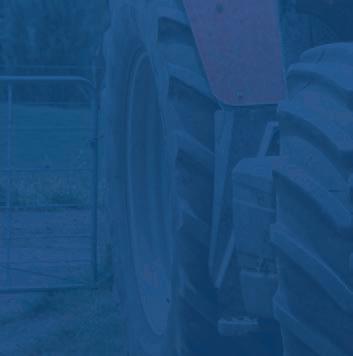












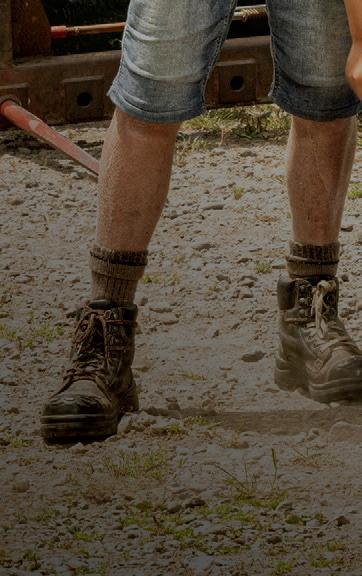







‘To sum it up in one word I’d say happiness. If you’re happy in your work, you’re happy in yourself.’
Mark Carter, Eltham, South Taranaki.
Taranaki’s Mangaotea Farm has undergone a great deal of diversification in the past 20 years, providing the dairy industry with superior genetics from not one, but three cattle breeds.

Working under two entities, Mangaotea and Blackwell Holdings, the Blackwell family – Robin and Jacqueline Blackwell, and daughter

Zarrah Blackwell and husband Richard Giddy – farm 622ha effective consisting of sheep, dairy grazing, bulls and breeding cows.
The farm was established when Robin’s parents purchased a block on Croydon Road at the end of Mangaotea Farm in 1963.
Around 20 years ago
Robin was running all bulls, dairy grazing and sheep on the farm, buying and trading from saleyards, when Jacqueline made the decision to purchase seven in-calf Hereford cows to begin her farming dream.
Two years later, in 2006, the couple bought six in-calf Angus heifers from a King Country stud and their Angus stud was established.
In 2010, they purchased Murray Grey cattle as well.
“As the third breed, it wasn’t as prioritised as much as the other two, so I really took the Murray Grey stud under my wing,” Zarrah says.
Zarrah bought all the Murray Grey stock off Robin and Jacqueline in 2017.
Today, Zarrah and Richard lease the home farm, which runs 90 Angus and 30 Murray Grey cows, and Jacqueline and Robin run neighbouring properties of 285ha, on which 90 Hereford cows are run.
They keep all replacement heifers, selling the surplus as weaners and keeping the bulls to farm through.
The Blackwells run 300 bulls annually, with 190 sold at their annual bull sale in September and the rest carried over to sell as two-year-olds the following year.
Zarrah says they generally have the same customers that return year after year to purchase their bulls, indicative of the high standard of the cattle.
Superior genetics across all the breeds is something the Blackwells concentrate on, with moderate birthweight
and calving ease prioritised across all three breeds.
“Dairy farmers don’t want to be pulling calves out,” Zarrah says. “We are also trying to breed short-gestation bulls, which is important to dairy farmers.”
Jacqueline bought a line of good sire bulls from Grassmere, Westholm and Tawanui Hereford studs.
“The calves on the ground are looking even better than those that were born last year, which were already
consistently good calves,” Zarrah says.
Mangaotea Angus has also recently purchased some genetics from Shian Angus in Taumarunui.

“We are really excited about that. He has all the figures we were after, and we will use him over the younger cows. We are also AI-ing to Taimate Roy (Taimate Angus, Marlborough). There is some cool stuff happening. We are always looking ahead to the next year.” n

Any cattle trait that reduces stress on a dairy operation is ideal – and with Murray Grey cattle, there are plenty of positives.
Originating in Australia’s upper Murray River Valley in the early 1900s, the Murray Grey is a polled beef breed similar in appearance to the Angus, but grey, silver or dun in colour.
Murray Grey genetics are increasingly being used over dairy cattle in New Zealand to throw a calf that is valuable as a beef option whether female or male.


NZ Murray Grey Beef Cattle Society vice-president Zarrah Blackwell says some key benefits of using Murray Grey genetics is the easy identification of a Murray Grey calf, ease of calving with calves of low to moderate birthweight, and the breed’s reputation for a quiet temperament.
“A Murray Grey bull throws a grey calf over a dairy cow, making them easily identifiable in the paddock,” Blackwell says.
“The Murray Grey breed is also easy calving, with calves of a low to moderate birthweight. Despite its size, a Murray Grey calf is vigorous at birth, out easily, and up and around quickly.
“Typically, Murray Grey cattle are quiet and easy to deal with. An easy-going temperament in both the males and females of the breed are an essential component on any cattle operation.”
Blackwell, of Mangaotea Farm, says Murray Grey calves are also fast growing, an excellent trait for calf rearers and those wanting to take
advantage of the breed’s excellent reputation for quality beef.
“We have a couple of clients who use Murray Grey bulls over their heifers and then sell the calves at 10 days old to people wanting to rear and finish them,” she says.
“Another client uses Murray Greys over later cows, keeping all calves to raise on finishing blocks.
“Murray Greys readily convert grass to beef, finish economically in feed lots, and have high yields of saleable beef.”
Blackwell says one challenge for Murray Grey breeders in NZ has been the relatively small gene pool in the country.
“There are numerous breeders but not a lot of cows per breeder,” she says.
“But there are some excellent Australian performance genetics coming in now. NZ Murray Grey Beef Cattle Society president Barry Macdonald (Torrisdale) buys a bull every year or two from Australia, and the resulting progeny has been positive.”
Blackwell bought a bull from Macdonald – sired by Melaleuca Locky – that Macdonald bought in Australia and imported semen from.
“The progeny is really adding something to my herd,” she says. “Carcase figures and calving ease were spot-on. The heifer calves from last year were impressive, and as he was used over all the mixed age cows this year, we are looking forward to seeing them grow on.”
She says the improvement in genetics in recent years is clear when she looks at her older cows.
Blackwell says things are changing a bit in the NZ Murray Grey Beef Cattle Society – for the better.

“There are three to four young breeders on the council who are new to the role but
are bringing in some great new ideas,” she says.
“They are passionate people. Plus, we have some other young people just starting out breeding cattle; positives every breed society needs.”
THE



• Bred for easy of calving
• Suitable for heifer or cow mating
• Placid in the cowshed and yards
• Early maturing quality beef
• Proven fertility
• Poll genetics now available




Proven calving ease, white face recognition, great temperament. Select using reliable data for growth rates and strong carcass quality. It pays to capture the HerefordX advantage.


To find out more about buying a registered Hereford bull, view our breeders online sale catalogues at herefords.co.nz



















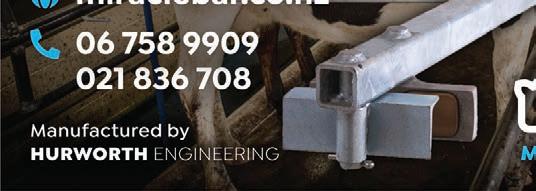































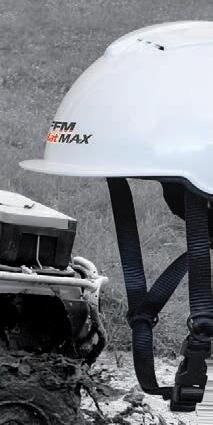


SHEDLINE® is a leading New Zealand brand in durable PVC dairy shed aprons and milking sleeves. SHEDLINE® is dedicated to providing the benchmark for personal hygiene protection in and around the milking shed.






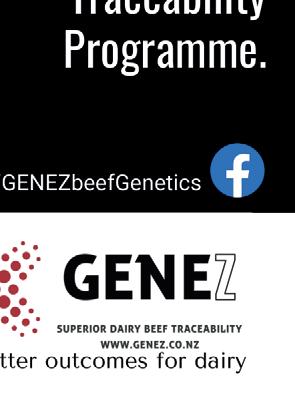



Any old timer in the dairy industry will tell you of the cyclic nature of the payout forecast.
Terms like “what goes up must come down” and endless talk of “dairy industry volatility” are trotted out in moments such as those that the industry is going through right now.
This is the third such major down cycle in the dairy payout I have seen in my time as a journalist – 2008, 2015 and now this one.
Each one has had its own unique set of circumstances at the fringes, but at the heart of the matter lies the simple fact that as an exporter, we’re at the mercy of what happens in overseas markets.
When supply is high, demand falls and the price falls and unfortunately there’s no getting around that. It’s not a situation unique to dairy; the whole of the agricultural economy is hurting as it battles falling commodity prices and input price inflation.
Every time it happens, the sector digs in and tries to ride it out the best it can. I’m reminded of Jack Cocks’s 2021 Kellogg Rural Leadership study on how resilient farmers can thrive in the face of adversity. He came up with a pretty simple model
that is a useful base to work from. If you imagine a pyramid with the base centred on keeping well – in other words, what you need in life to be happy and content. This can be anything from exercise to celebrating and enjoying the little things.
Sitting above that is connections, which he calls the glue holding it together: family, friends, communities and networks. These connections are the people in our lives who often buoy us up and encourage us to achieve, to rise above in times of adversity, he says.
Sitting at the top is purpose – the reason farmers do what they do and why they do it.
The work was based on five farmer participants used as case studies.
It also found that the six common characteristics across these participants were that they are driven people, high achievers, emotionally intelligent, unrelentingly positive, grateful and humble.
While it can all come across as a bit touchy-feely, many of its points hit home whenever you hear farmers or industry experts at farmer meetings or field days to talk about the effects of a low payout and what can be done to get through it. Indeed, some variation if not all of these
themes come forward.
Cocks’s study also found that rural professionals supporting farmers need a clear understanding of not only the causes of adversity, but some of the strategies and techniques they can use to be resilient.

I’d like to think this is largely being done through levy-paying bodies such as DairyNZ. You only have to recall its Tight Times campaign or the drought meetings it has undertaken over the years when things turn tough.
But now is the time to get full use out of those organisations that farmers pay for through levies or as members, be it DairyNZ, Farmstrong or Federated Farmers, as well as supply companies, banks and consultants. Even the farm support team at the Ministry for Primary Industries can play a role here.
If we all work together and look out for each other, we should get through this time of adversity.
Like us: farmersweekly.co.nz
Follow us: @DairyFarmer15
Read us anywhere: farmersweekly.co.nz

Brunch on us
Various dates and locations throughout the month
DairyNZ is running a series of free cooked brunches around the regions.
This is an informal opportunity mid-calving to catch up with fellow farmers, mates and staff on how things are going this calving.
Info at www.dairynz.co.nz/events/
September 13 – Dairy Women’s Network
The Power of Storytelling, live webinar
We know that stories are a powerful way to influence and engage teams and customers, lead through change, and take any presentation or idea to the next level.
How do we use them in a way that sounds natural?
In this webinar, you’ll learn:
• Why stories are so powerful
• How to use them in leading, training and motivating others
• How to build your own story bank to use immediately
Meet the presenter:
Sara Keenan is a Business Customer Experience
Facilitation Manager at ASB Bank. Her background encompasses leadership and coaching, and training effectiveness and time management all at levels and industries.


This webinar is brought to you by ASB and Dairy Women’s Network.
Info at www.dwn.co.nz/events/
September 19 – DairyNZ
South Hokianga spring group
With calving mostly done, join us on the Ambler’s farm for our spring seasonal group. We’ll be covering a variety of topics relevant to the farm, area and season. This will be a chance to get off the farm, connect with the community and hopefully come away with something new.
Info at www.dairyevents.co.nz
September 19 – South Hokianga Spring Group
With calving mostly done, join us on the Amblers’ farm for our spring seasonal group. We’ll be covering a variety of topics relevant to the farm, area and season.
This will be a chance to get off the farm, connect with the community and hopefully come away with something new.
Lunch provided www.dairynz.co.nz/events/

Various dates and locations throughout October
Get practical techniques and confidence to manage the numbers in an agribusiness.
Step through the process of preparing and monitoring accurate farm budgets to stay on top of farm finances. Have confidence in achieving longer-term goals such as self-employment or growing your farming business. www.dairynz.co.nz/events/
October 5 – Eastern Southland
With good pasture management being at the forefront of NZ’s dairy industry successes, getting pasture management right in the spring is crucial. Whether its your first season or tenth, this session will be a great opportunity for you or your team to refresh or learn some new pasture skills.
This will be a 90-minute session so short, sharp and informative, focusing on:
• Pre and post grazing covers
• Grass leaf stages
• Seasonal differences in grass composition (dry matter and energy content)
• Understanding feed wedges
Info at: www.dairynz.co.nz/events/


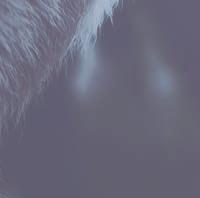





















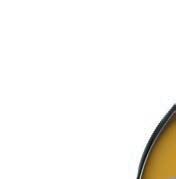


















Cashels Multi-Purpose Dropside Trailers have been developed to cater for general everyday haulage work. Built with quality and strength in mind, these trailers are designed for transportation of sand, gravel, topsoil, fertiliser, grain etc.
Key Features:
• 70mm ADR 6-Stud axles
• Spreader chains
• Hydraulic tail gate
• Hydraulic brakes
• Innovative folding quick-hitch stand
• 8 Tonne three-stage tipping ram

• Re-enforced pivot points
• Tapered tipping body for ease of load discharge
• Height Side Boards 500mm
• Height Front 650mm
• Swivel towing eye
• 5mm Floor Plate
FROM $31,000.00+GST
8
10
Scan the code to see why it’s ‘the best value farm trailer in NZ’!
• One double-acting hydraulic service controls both the Bale Cutter and Film Catcher


JUST LANDED
• Uniquely designed blade ensures a closer cut to tines
• Heavy cylinders fitted to unit to produce ample force to cut tough bales

• Comes standard with Euro Linkage fitted and designed to facilitate varying linkage options
Scan the code to watch it in action
SCAN THE CODE TO HEAR STEVE TALK ABOUT HIS SAMASZ TRIPLES
$9,500.00+GST
‘THE BEST VALUE FARM TRAILER IN NZ’!


With a 400L hopper, and a simple calibration system, the FarmMax Airseeder is a ‘must have’ piece of kit. A mulcher / airseeder combination is a perfect tool for managing pasture and re-sowing grass in one pass. GPS calibrated (so seed flow adjusts to suit ground speed) you just set and forget. A fast and efficient way of getting new pasture underway, and turns your mulcher into a more versatile tool, brilliant.



Features:
• Easy to operate, GPS calibrated
• Adjustable seed flow
• On/off switch on Plough Arms
• Quick change seed roller for rates and seed size

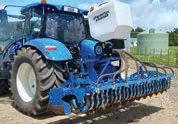

• Easy collaboration
• Large fans for even distribution
• Easily Mounted on a wide range of Machines.
N0W $16,500.00+GST
Price does not include fitting to machine.
See below results from one Northland Farmer! Scan
The twin hawkbill prong grab bucket is intended for picking loose silage from heaps, semi-liquid manure, handling of bales, construction rubble or brushwood, and many other farm or city maintenance work.
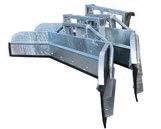
• The twin hawkbill prong grab bucket is a front loader implement
• Made in Europe
• Euro Hitch
• Available widths: 1.5m, 1.8m, 2.0m, 2.2m, and 2.4m
• The wide opening angle of the prong frame allows for easy scooping of bulk materials heaped at wall and floor corners.
1.8m IN-STOCK
$6,985.00+GST
The field and meadow harrow is used for loosening the topsoil vastly improving your pasture productivity. Other harrow uses include breaking up lumps, weed control, levelling of small irregularities, lowering your fert use, levelling out ground.
• The robust and durable structure is made from HS (high strength) steel.
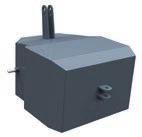

• The finish is made with a spray coat.
• The high-power hydraulic cylinders help deploy and fold the implement quickly.
• Improve tractor stability

• Reduce load on front wheels
• Improve ground contact
• Increased traction
• 300kg, 800kg, 1000kg available
300kg $1,170.00
800kg $1,420.00
1000kg $1,695.00
Making a big job easy, keeping your feed pads clean.
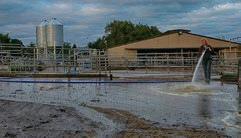
• Euro Hitch
• 3.6m wide
• Fully Galvanised Scraper
• Save time and conserve water
• Height adjustable rubber scraper
N0W $7,500.00+GST
• Available widths: 4m, 5m, 6m, 8m
6.0m Folding IN-STOCK
$6,995.00+GST
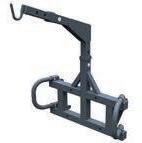

• 1000kg lifting capacity
• Features a very strong hook
• Euro hitch
• HS (high strength) steel
$2,110.00+GST
BACK IN-STOCK
FarmMax SmartGrabs

• Euro hitch
• Features a highperformance hydraulic cylinder
Pallet Fork
• Euro hitch / 1600kg rating

• Option to add silage tines to make a combo

• Adjustable forks
Scan the code to watch it in action
$2,995
$2,490.00+GST
FarmMax 1.8m
Silage Grab
• Heavy-duty hydraulic cylinders provide a firm and good hold of the grabbed material.
• Euro hitch
• High back frame
NOW$1,750.00+GST $2,500EA WAS
SAVE 30%
BACK IN-STOCK
FarmMax Log Grabs
• Euro Mount
• Width 1200mm
• Lifting Capacity 1300kg

• Opening height 870mm
• Made in Europe
$5,500.00+GST $5,495.00+GST
FarmMax
Tyre Roller
• 3m heavy duty - Ideal for pugged paddocks

• New design with extra weight holders
EA WAS
SAVE 15% SAVE 10%
$8,550.00+GST
FarmMax 3in1 Combi Cutter
• One implement - does 3 jobs... A silage cutter, a bale unwrapper with a plastic film or net holder, and a bulk scoop


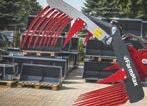
$9,995.00+GST
Features:
• Cuts at the front and levels at the back
• A cost effective alternative to a scoop
• Ideal for track maintenance
• Repair pugged land
• Double beveled blade
• Drain tailings
FarmMax Landplane 3.0m SAVE 10%
• 3m width $7,200+gst
We have bought a fair bit of gear of Farmshop and one of the most useful things has been the Landplane. It cuts in the front and levels in the back, so works really well on rough and pugged paddocks where an hour or so with the Landplane levels and smooths everything else into a nice clean paddock. We also use it for drain cleanings, general farm and track repair - yep it’s been a really useful implement.
“The leveling bar on steroids” $7,995EA WAS
Brad Allen, Pouto.






























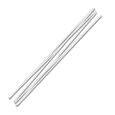




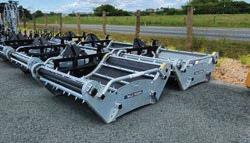

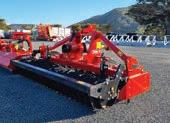


The Gigacuts’ ability to cut, condition and group grass efficiently significantly contributes to producing high-quality hay.



The optimised haymaking process ensures that the forage retains essential nutrients - leading to livestock feed that has a superior nutritional value. Additionally, reducing the drying time helps prevent spoilage and mold formation - this ensures that the hay remains suitable for long-term storage and use.
The SaMASZ Team talking to Northland Contractor Steve Woods about his set of triples... it’s our ‘go to’ mower’.. It’s done over 10,000ha and some rough hectares at that, and he’s never had to weld up the frame (which he’s had to on some other brands he’s used) It’s run over posts and drain cleanings, but in general I haven’t had anything go wrong with it... ‘Its solid, and that is a big thing. You go to work every day, and it goes every day

“
IF YOU’RE NOT 100% SATISFIED IN THE 1ST 100 DAYS, RETURN IT AND GET 100% MONEY BACK!
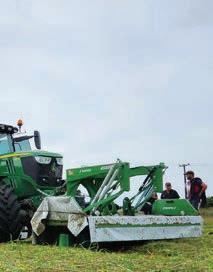
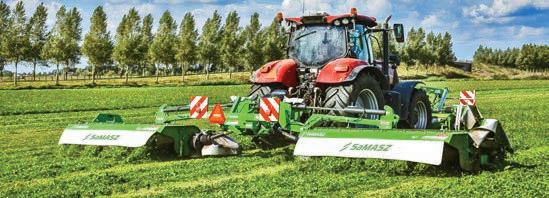




1. Fastest tip speed - 3200RPM = better, cleaner cut
2. 25mm thick 4 tooth engagement gearsextra strength for rugged conditions
3. Shot blast PLUS electrophoretic paintmeans every surface is evenly painted for longer life and less rust
4. Quick change blades and moduleskeep mowing in the field = no downtime
5. Guinness World Record - for most grass cut in 8 hours
6. Cutter bar full width of module - module is protected in the field, resulting in less down time and damage

7. Double action hydraulic breakaway with auto resetgreat for protection and prevents damage
8. SaMASZ build their own cutter-barsend to end quality and refinement control (outsourcing slow to change)
9. Longer blades 110mm - better cut quality and no striping
10. Box section frame - superior strength no downtime no welding weaknesses
11. 300% cutter-bar protection on replaceable skid plates and wear plates = longer life and smarter investment over more years = less $/year
12. 360˚ blade spin = self cleaning, no grass build up even in heavy crops
13. Key-way breakaway on module = key breaks before any gear damage = low fix cost...
Key-way costs $5 compared to $500 to replace a complete module
14 Direct genuine SaMASZ partsreduced maintenance cost
15. Large parts inventory held in NZ = no downtime
16. Replaceable stone protection with convex shape to enhance grass flow = no catching or grass build up on the cutter bar
17. 2 year SaMASZ warranty
18. Front mower is open - giving best in class visibility in operation
19. KDF Front Mower - has 4 way travel, best in class, movement and contour following
Shot Blast: All surfaces are shot blast before painting
Anti-corrosive: Anti-corrosive undercoat
Electrophonic Paint: Paint and steel have an opposite charge, meaning paint is perfectly and evenly attracted to and adheres to all surfaces evenly.
Two coats: x 2
Electrophonic top coats for top finish
Curing System: Heat and air paint curing system
XT 390, XT340
Centrally hung with Hydro-pneumatic suspension
Improved ride comfort
Adaptive ground contact
Better crop protection
Enhanced maneuverability
Reduced soil compaction
Increased productivity
Longer equipment lifespan
XT390 $42,000
3.9m Central Suspension Mower

XT340 P.O.A.
3.4m Central Suspension Mower


TALK TO US ABOUT A NO OBLIGATION
What people are saying...
Northland Farmer, Aaron Messenger talks about his SaMASZ KT301

... Talking with Northland Farmer Aaron Messenger about his SaMASZ KT301 mower on his 170ha farm and how well it suits his operation both cutting silage and topping, The travel bar and the wider cutter bar is a real benefit... Aaron reckons it exceptional and is very happy with the KT mower. Aaron Messenger, Northland
IF YOU’RE NOT 100% SATISFIED IN THE 1ST 100 DAYS, RETURN IT AND GET 100% MONEY BACK!
P8-890
8.9m Tedder
High quality of tedding
The P8 series hay tedders are perfect for medium to large farms and contractors.

Guarantee the highest quality of work and excellent performance! Hay Tedders ensure an even spread of grass, meaning the cut grass drys evenly. They perfectly target the ground and effectively pick up the grass between the rotors. Suitable for wetlands.
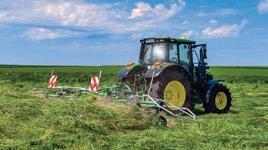
Standard equipment P8-890:
• solid grease gearbox
• tine loss protection
• hydraulic folding
• adjustable angle of spread
• lifting curtain
• adjustable wheel position
• warning plates
• road lights
• PTO shaft
NOW $55,008.00+GST
Rotary Tedders P4 - 531, P6 - 651
P4-531 $26,800 +GST
5.3m Rotary Tedder

P4-651 $32,200 +GST 6.5m Rotary Tedder

David O’Neill Contracting Ltd based out of Omarama covers a vast area from Tekapo to the Lindis Pass down to Kurow and up the Haka Valley... We have 3 sets of SaMASZ Triple Mower Conditioners
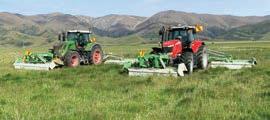
1 x 8.6m and 2 x 9.4m cutting up to 2500 - 3000 hectares each. Great mowers and first choice for my next replacement.
David O’Neill Contracting - Omarama
“ “
IF YOU’RE NOT 100% SATISFIED IN THE 1ST 100 DAYS, RETURN IT AND GET 100% MONEY BACK!
Z2-840 $70,630+GST
Rotary Rake Z-470 Single rotor
With a 4.7m working width - these are a great option for small to medium operations.



Basket Rake TWIST 600 - Rake and Bale, SAVE TIME

NOW $23,070 +GST Gearboxes of proven supplier SAVE 10% TALK TO US ABOUT A FREE DEMO!
3 LEFT IN-STOCK WAS $36,000 NOW $26,000 +GST Save time - One pass contracting SCAN THE QR CODE TO WATCH THIS RAKE IN ACTION SCAN THE QR CODE TO WATCH THIS RAKE IN ACTION
MONEY BACK SATISFACTION GUARANTEE IF YOU’RE NOT 100% SATISFIED IN THE 1ST 100 DAYS, RETURN IT AND GET 100% MONEY BACK!
SAVE 10K
